Art–Treasure–Collection
Public Collections of Art in Hungary, 1802–1906
By Ferenc Tóth
By Ferenc Tóth
MúzeumCafé Books #3
The editorial board of MúzeumCafé, the magazine of Hungarian museums under the editorship of the Museum of Fine Arts in Budapest, launched a series of volumes on the museum profession in 2013. The volumes are non-profit products filling a gap, works containing studies by Hungarian museum professionals, academic staff and researchers.
·
German Design Award 2019
8 February 2019, Frankfurt
Excellent Communications Design – Books and Calendars
Winner
8 February 2019, Frankfurt
Excellent Communications Design – Books and Calendars
Winner
Statement of the jury
"In this superb book, an interesting typographical design and approach to art have been realised in a sophisticated fashion, in terms of both form and content."
About the volume
The volume published under the auspices of Budapest’s Museum of Fine Arts summarises the 19th-century foundation of public art collections in Hungary and how the internal organisations worked in relation to those collections from 1802 – when the National Széchényi Library, then the Hungarian National Museum, were founded – to 1906, when the Museum of Fine Arts opened.
The general introduction of the book outlines the development of collecting objects and works of art, its different stages abroad and in Hungary, as well as the historical background to the emergence of the institutional framework. By strictly keeping to chronology, the publication follows in detail the development of Hungarian museums in the 19th century, from the foundation of the Hungarian National Museum, the first public collection in the country, and its later division into independent institutions, such as the establishment of the Museum of Applied Arts, Historical Picture Gallery, National Picture Gallery and then the Museum of Fine Arts. It focuses on the unresearched historical process of the development and growth of public collections of the arts.
An in-depth summary of this kind has been entirely absent in the Hungarian professional literature. Although a number of studies and books have been published employing a narrower approach, the development of art collections and the process of their integration in an institutional structure has previously not been explored. Until this book came out there was no publication in the Hungarian book market tracing the development of the network of public collections throughout the century.
The volume includes four chapters on the era:
I. The foundation of the first national public collection in Hungary (1802–1836);
II. The development of the museum’s collections of objects and works of art (1836–1867);
III. Art collections in the framework of the state system of public collections (1867–1894);
IV. The construction of a national museum of fine arts (1894–1906)
The study is illustrated by 118 images and the appendix contains so far unpublished documents related to collection history. Museum historical chronology, a list of names and a list of specialist publications relating to the era complete the book.
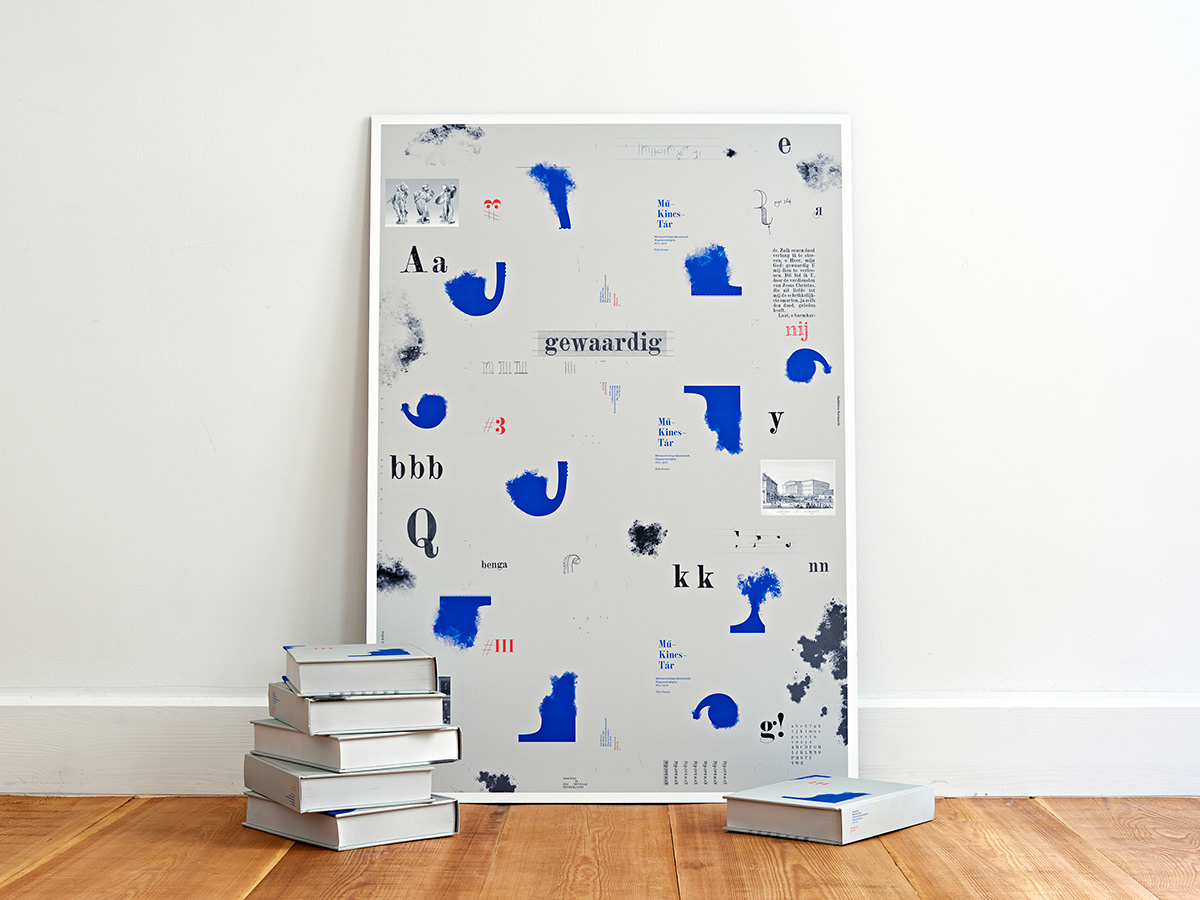
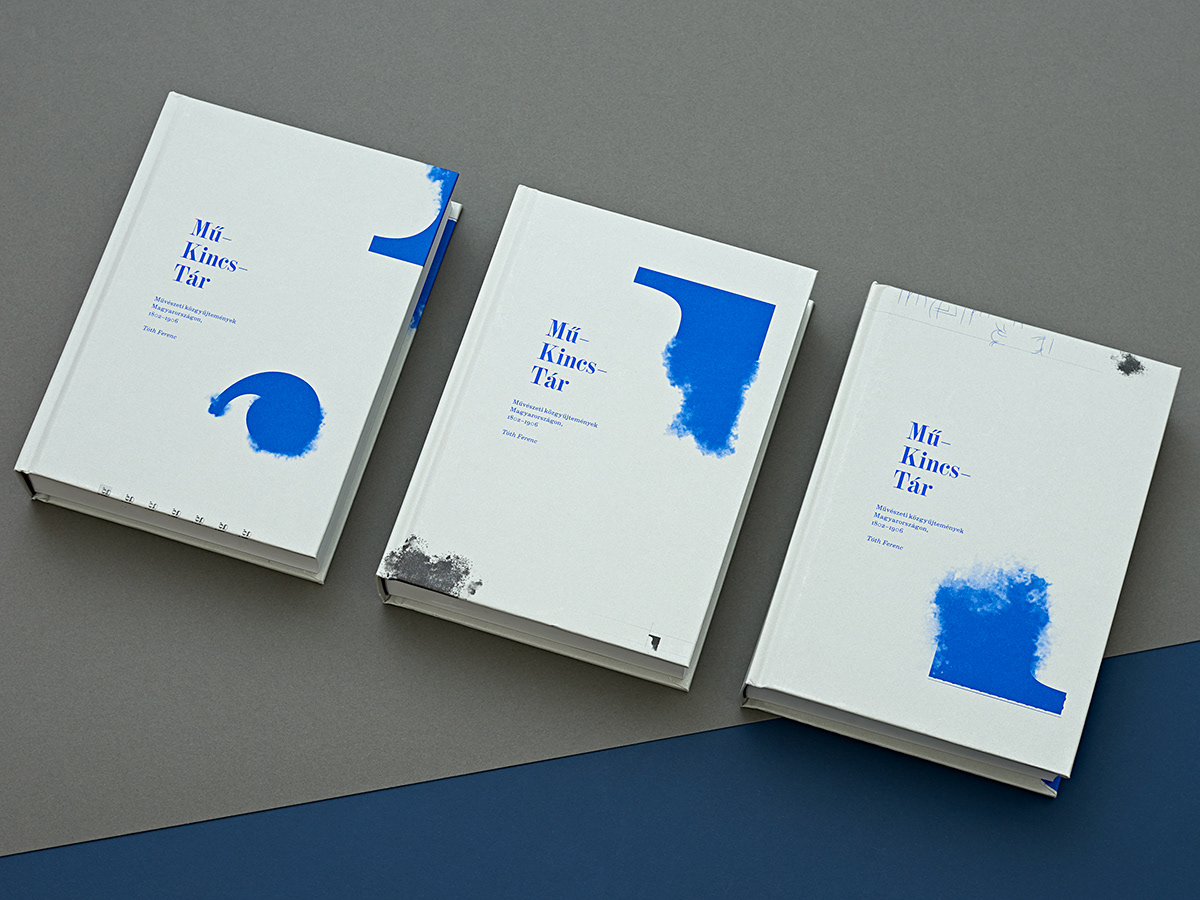
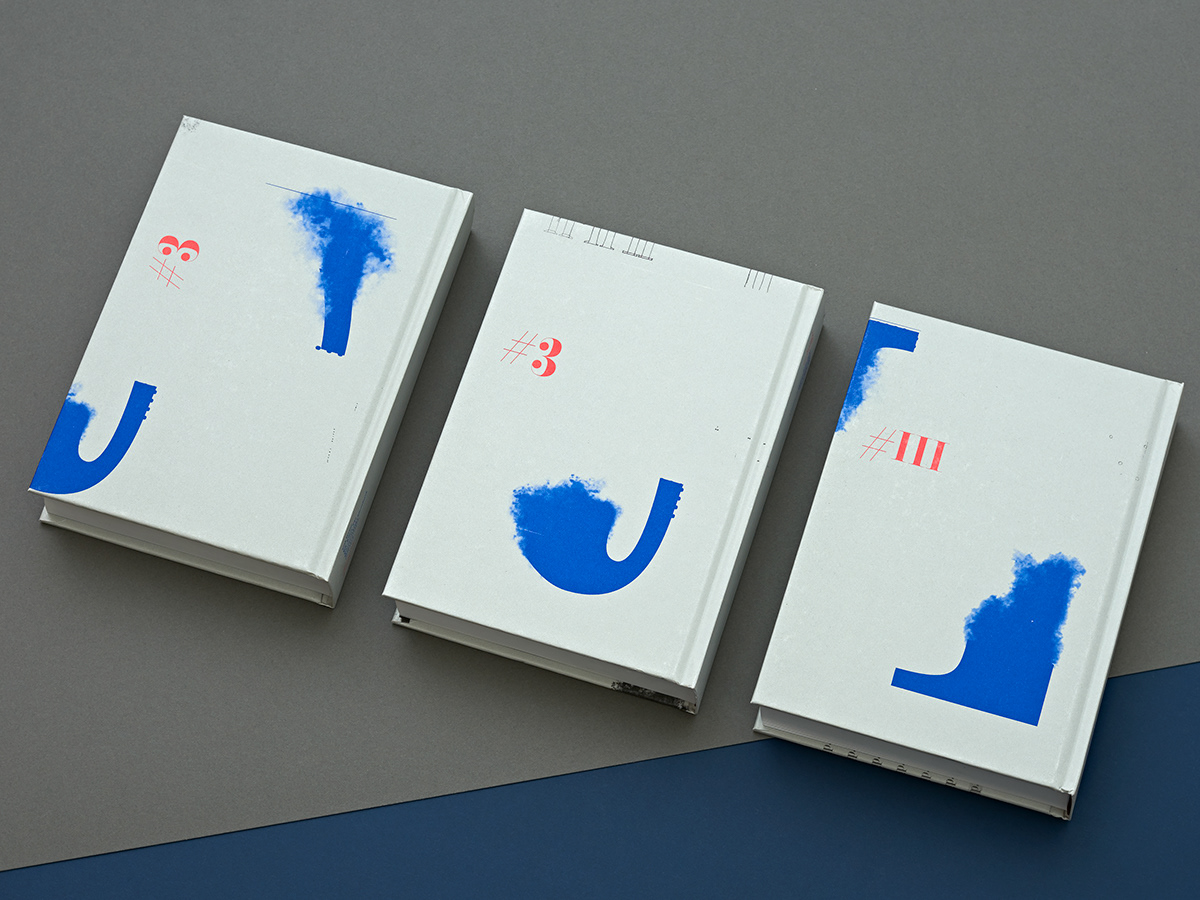
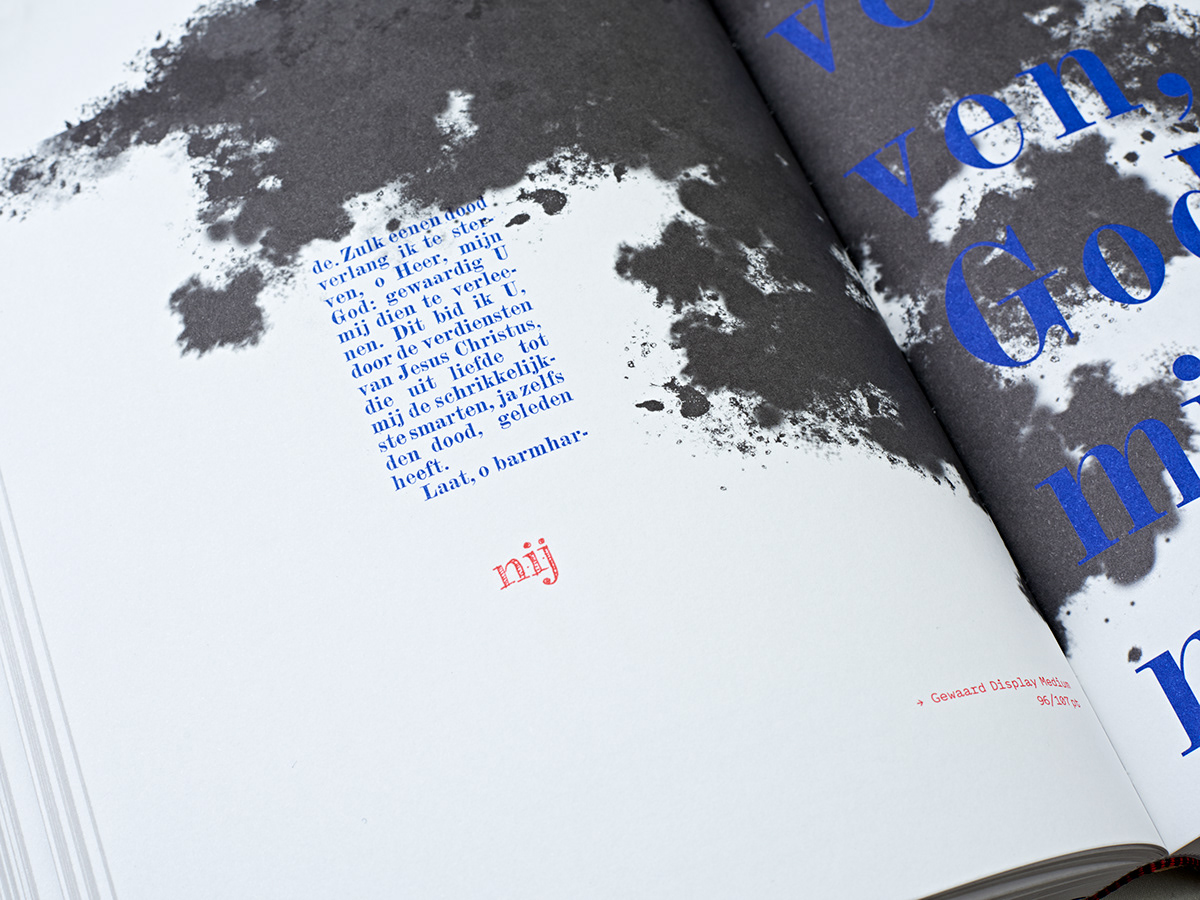
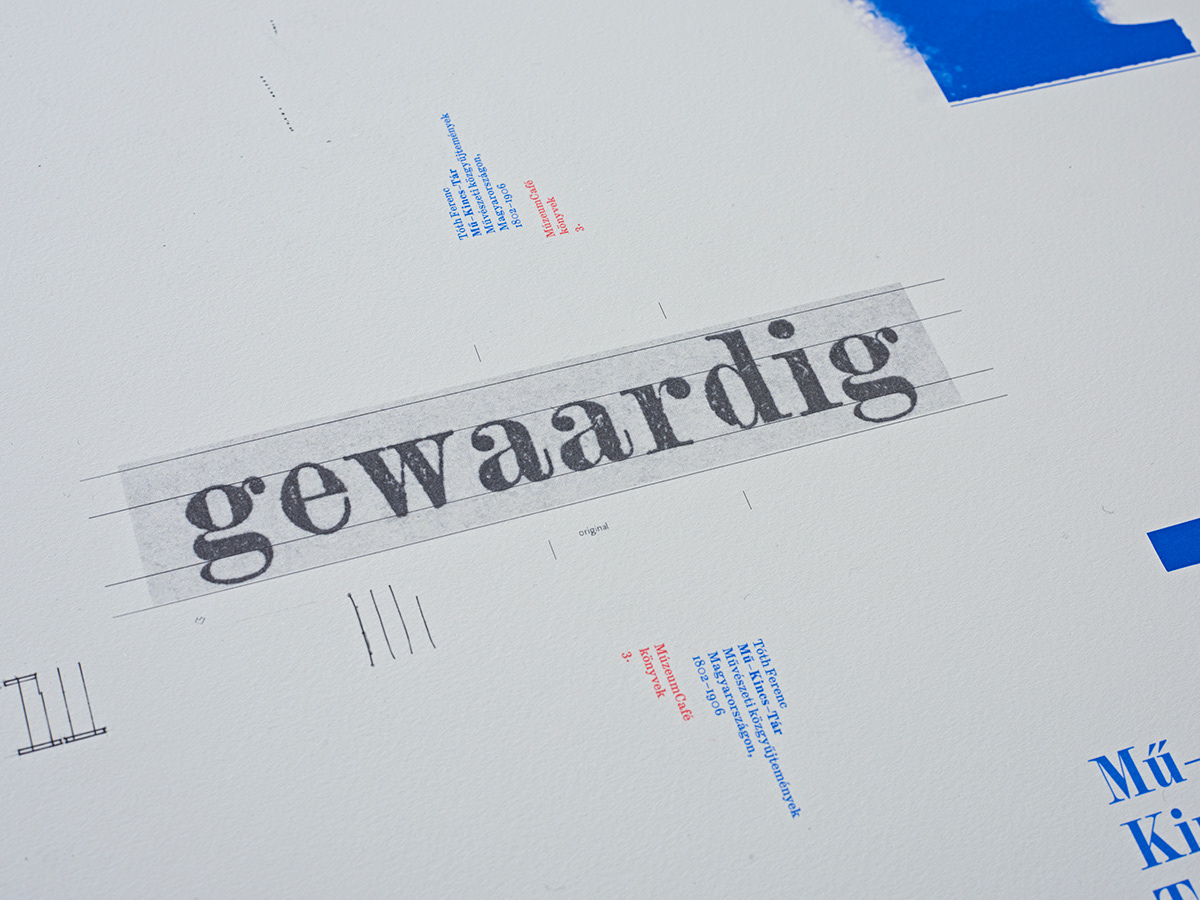
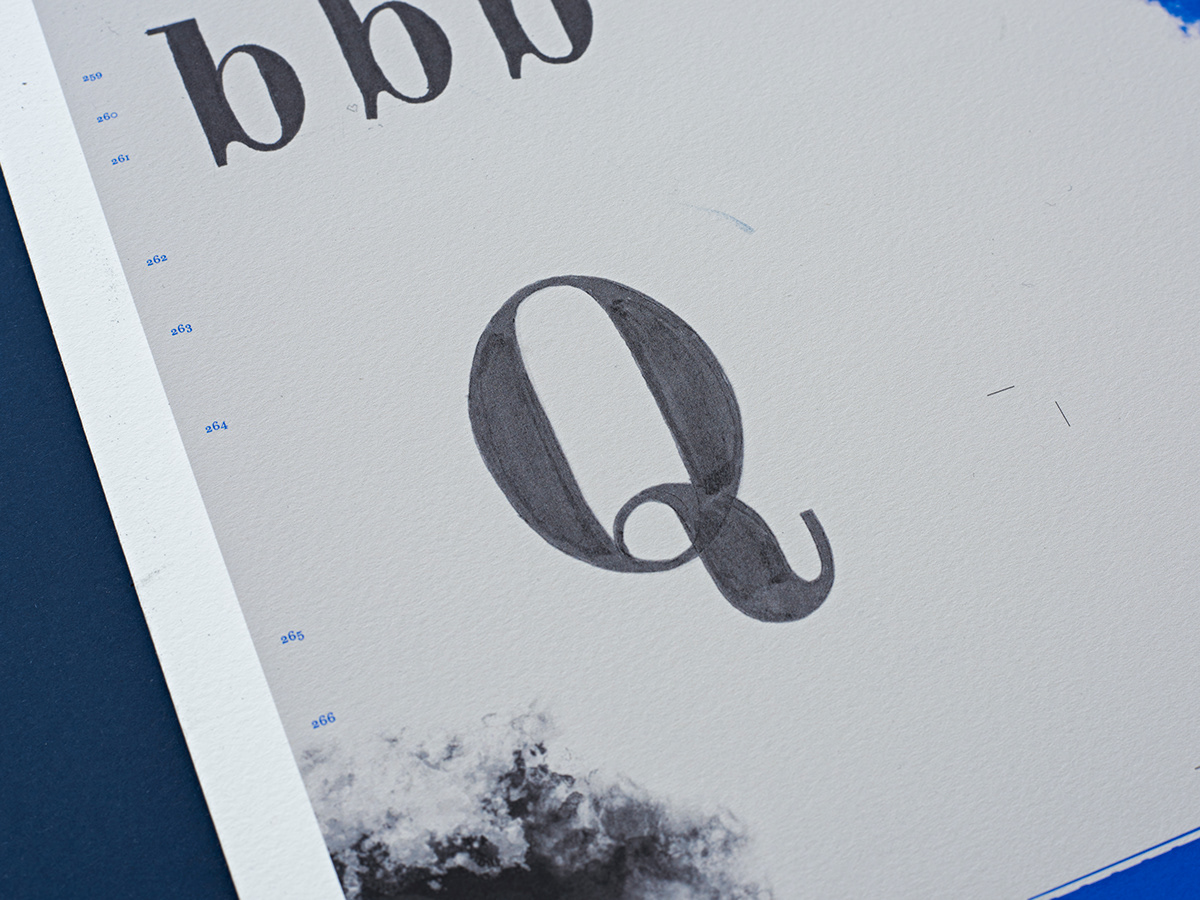
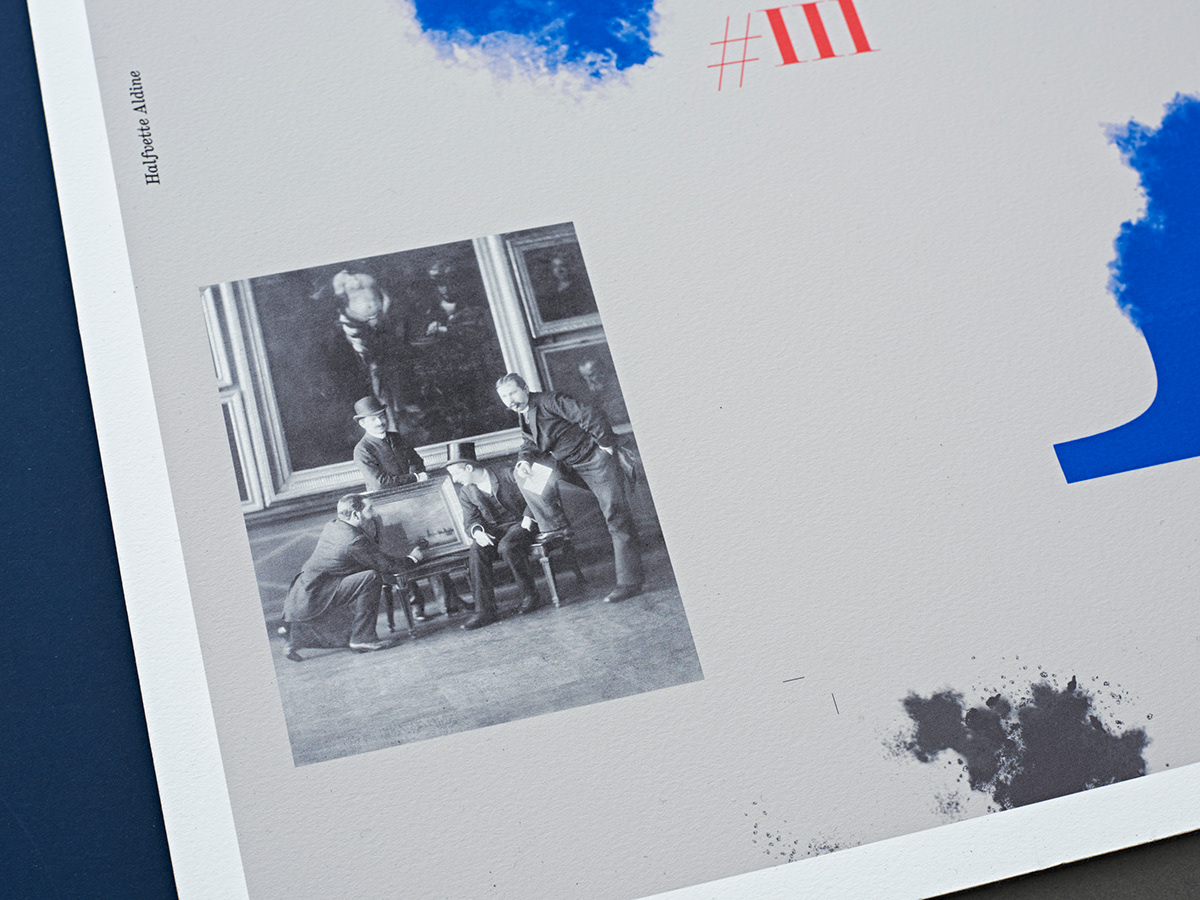


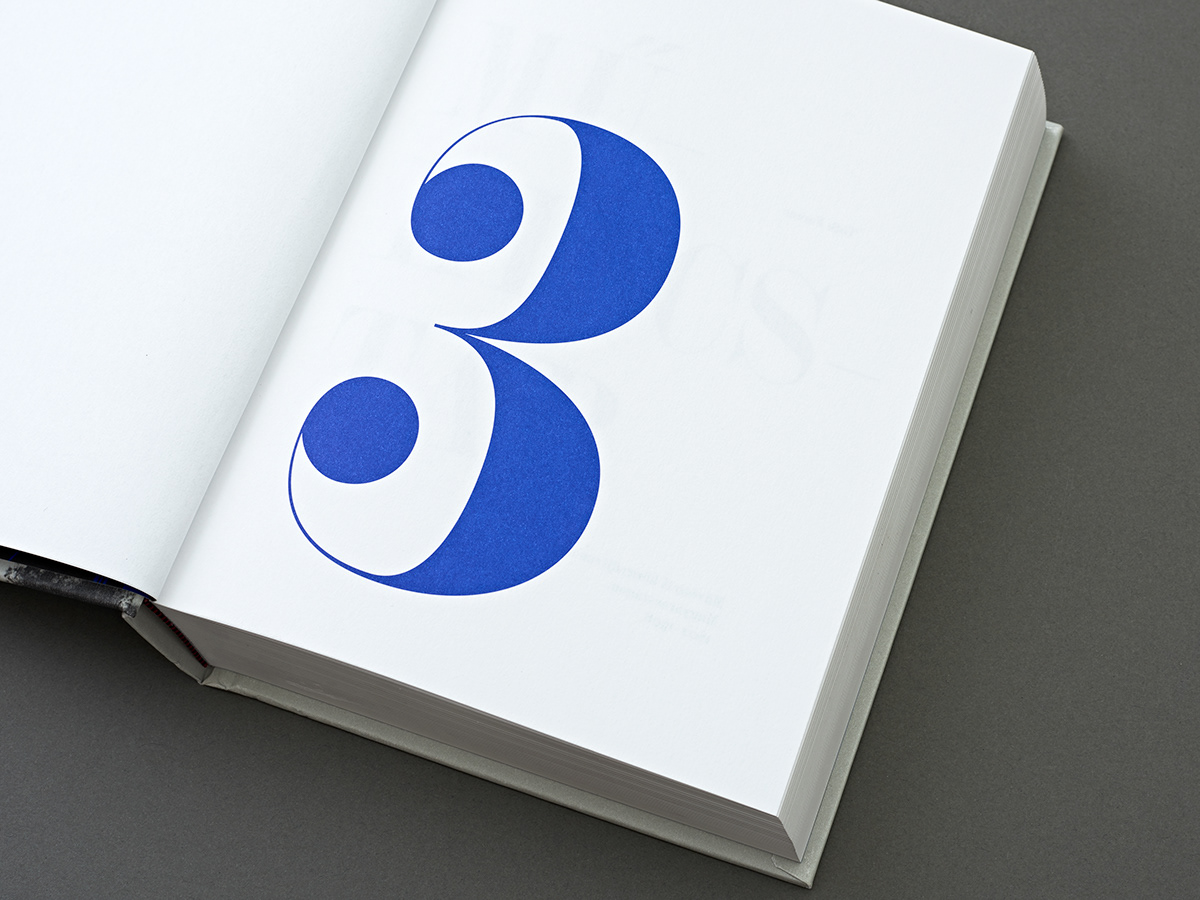
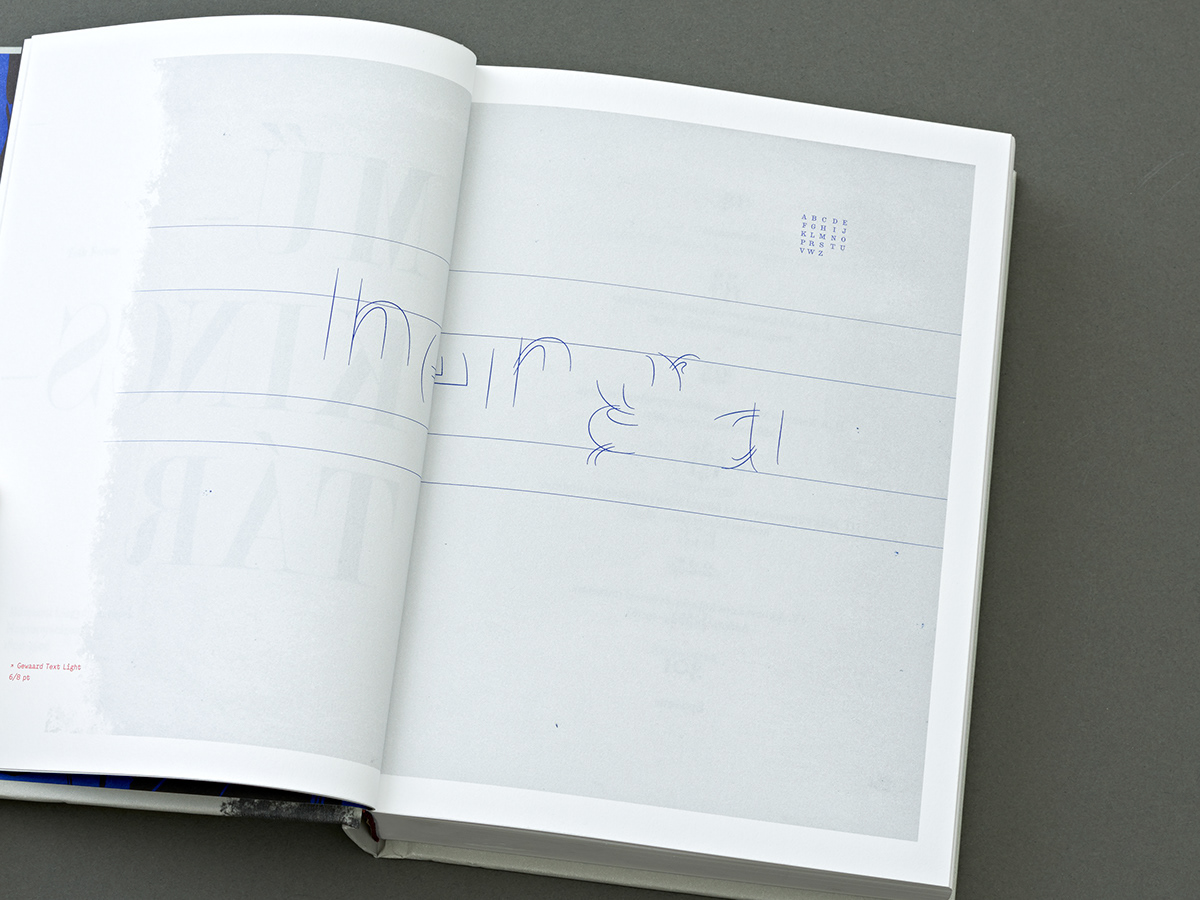
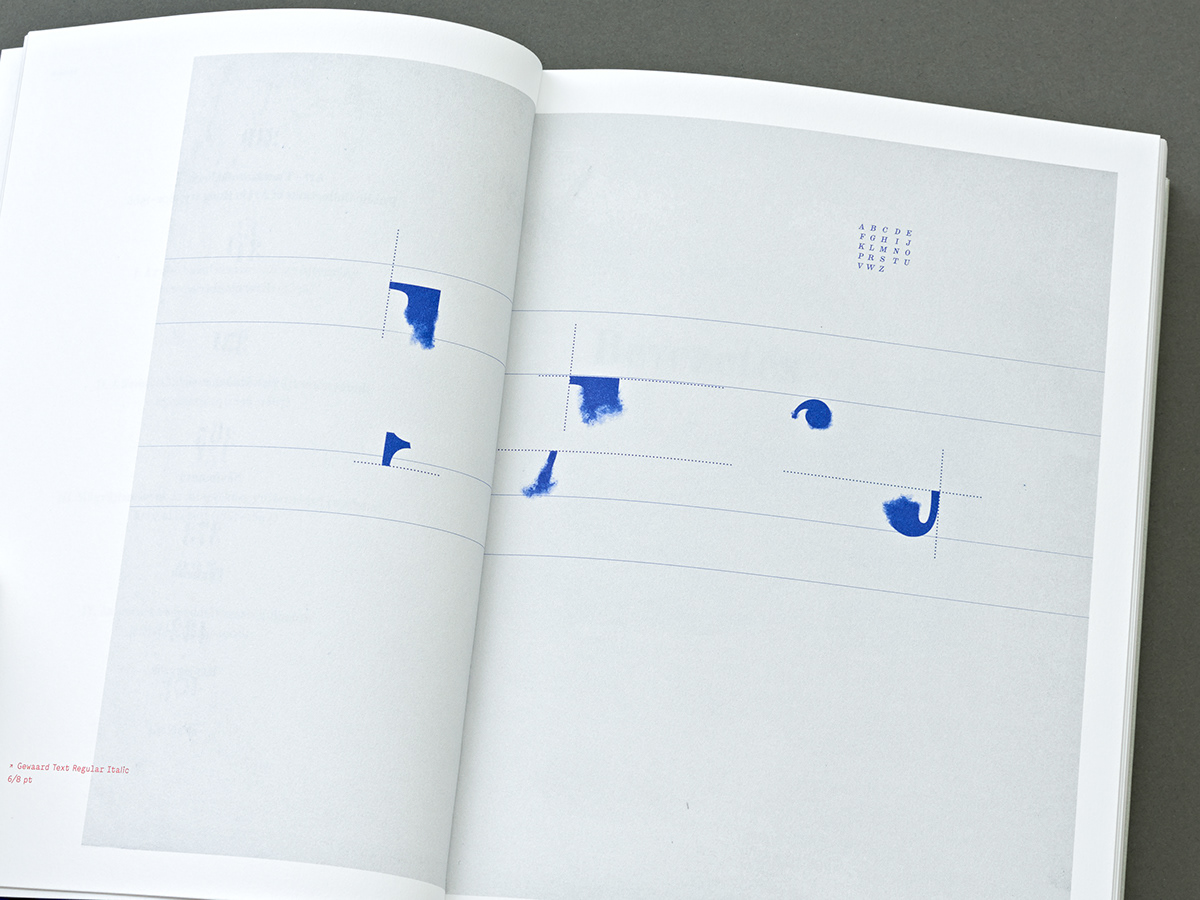
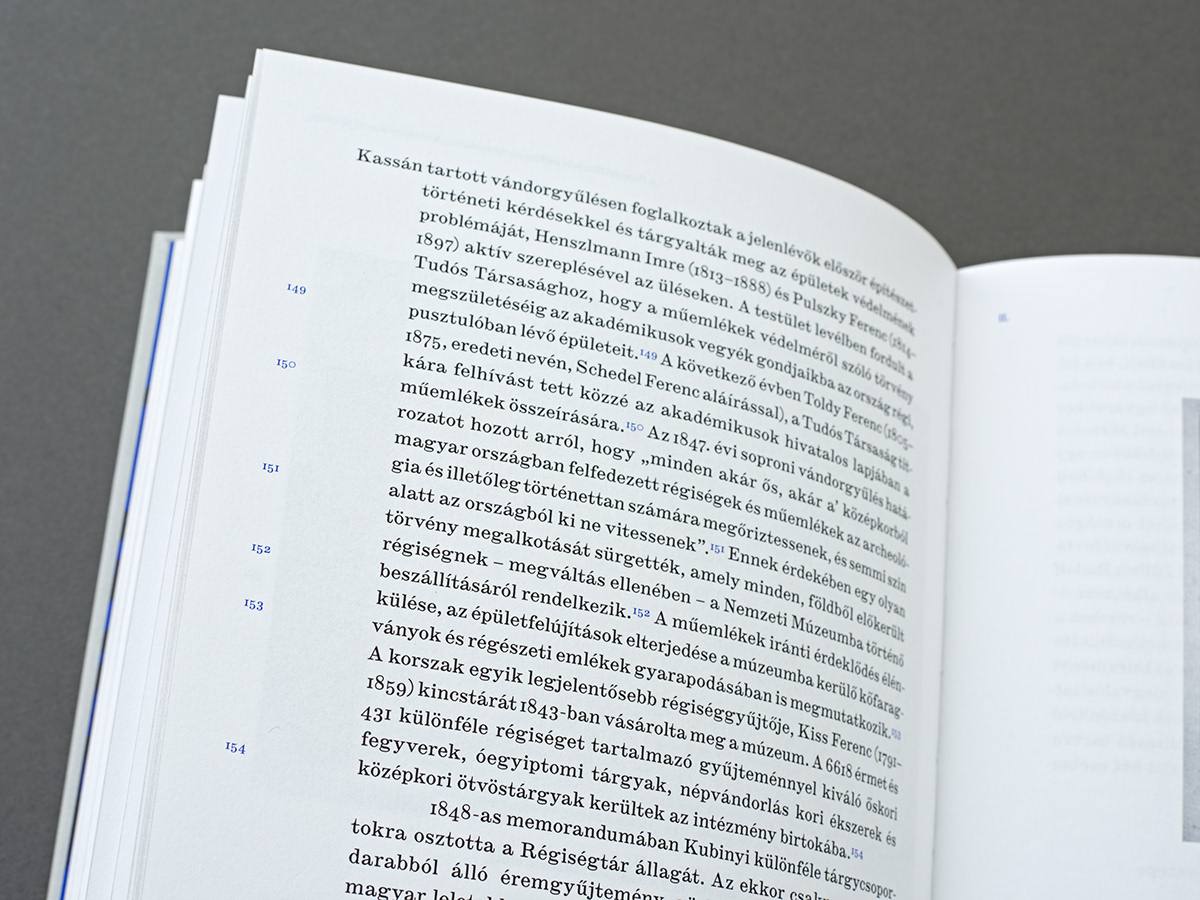
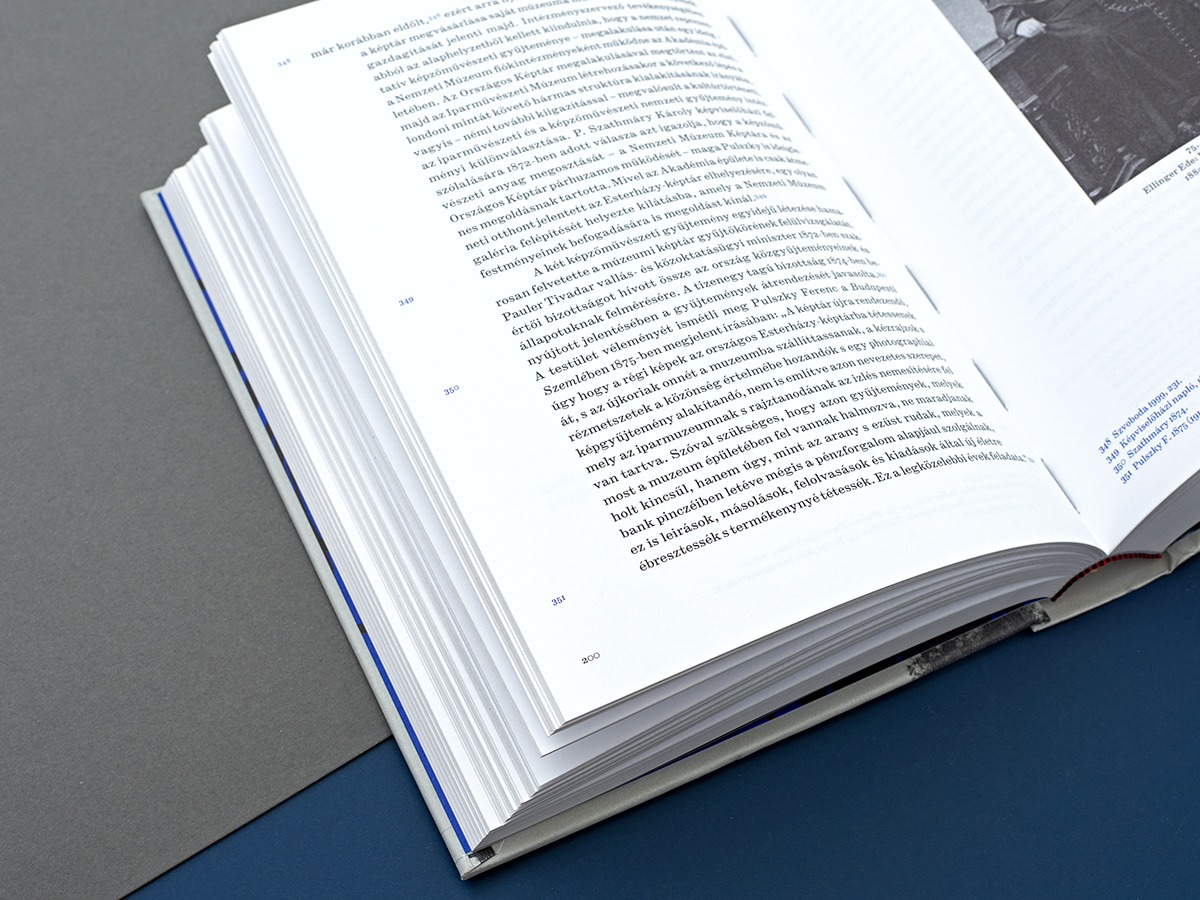
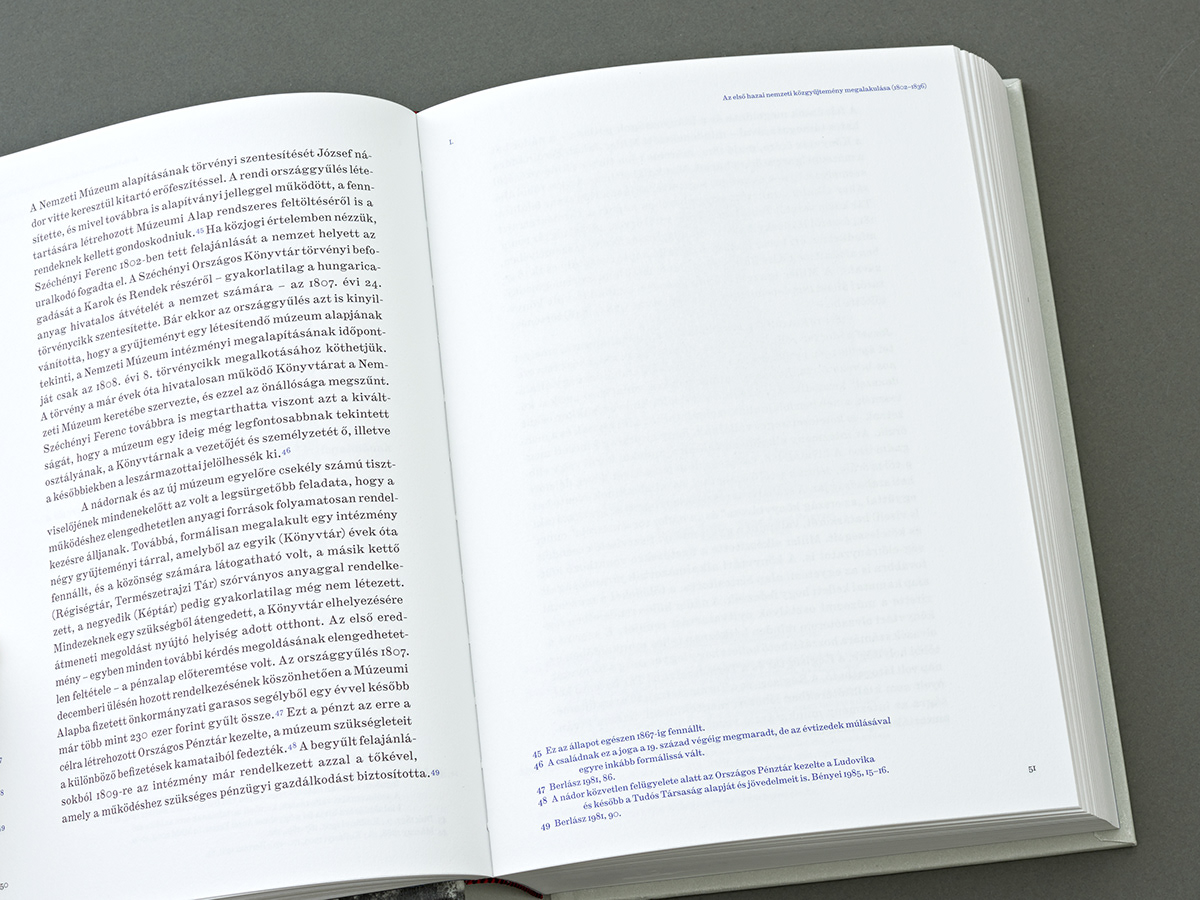
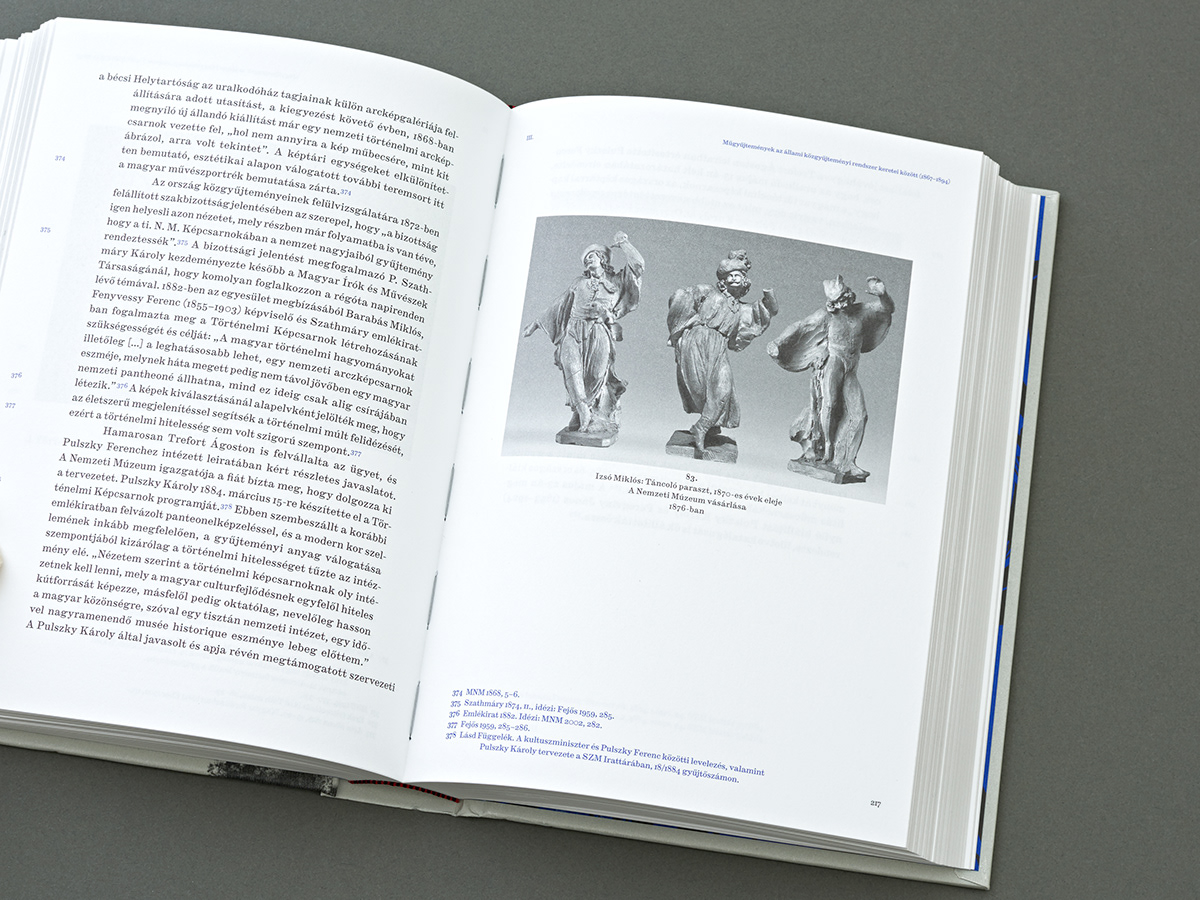
About the author
The author, art historian Ferenc Tóth, was born in Budapest in 1957. He worked as a museum specialist at the Department of Modern Art in the Museum of Fine Arts from 1986 and was its head of department between 1995 and 2000. He curated the permanent exhibition of the 20th century in 1990 and 1994, as well as a number of temporary exhibitions, including Digitart, Henry Moore, Alfred Manessier, Felix Droese, Bernard Schultze, Corneille Returns, and The Land of Myths – Gustave Moreau’s Painting. At the beginning of his career he was engaged in the forms of new visual expression in the 20th century and international contemporary art. Later his main field of research focused on the end of the 19th century and turn-of-the-century art, with special emphasis on the refinement of Symbolism and Art Nouveau, as well as the 19th-century development of the Fine Arts Museum’s collection.
About the designers
The book was designed by the design group Lead82 of artistic director Zalán Péter Salát and graphic designers Viktor Suszter and Dániel L. Németh, which received the German Design Award Gold in 2015 and 2017. The introduction of Hungarian typography with its rich traditions as their mission, the designers of the book series present the designs of contemporary Hungarian typographers and thus the project acts not only for the museum profession but also for graphic design. Designers offer a platform in books with a role of public service, thus opening up graphic design for Hungarian artists who represent a new generation in the international community of typographers.
The Budapest Museum of Fine Arts consciously, as a pioneering task, can encourage, present and support contemporary Hungarian designers. The book series may be the basis for a modern collection of typeface, which is intended to be presented to the public at an exhibition organised by the designers later – introducing their application in the books. It also provides publicity and draws attention to the activity of the museum and the book series sponsored by the Museum of Fine Arts.
That is how a book series on the museum profession can give rise to an exhibition of graphic design.
“The book uses the romantic Gewaard typeface designed by Ádám Katyi, a contemporary Hungarian typographer. The font comprising Text, Display and Poster cuts is the reinterpretation of the typeface of a Dutch prayer book printed in 1904. The text was set in 16 point typeface, considered large, and used full justification in the small-size original book printed by the still operating publisher Butzon & Bercker in order that elderly people would be able to read it in dark churches. The digitised (unfinished) version of Gewaard was made as an assignment at the Department of Type and Media of the Royal Academy of Art in the Hague in 2013. It is presented in this volume in a redesigned form completed with Light, Bold and Black cuts, which was commissioned by the designers of the book. The designer needed a long time for researching the history of the typeface referred to with the contemporary name Halfvette Aldine. Research was undertaken in the university library, the special collection of the Meermanno Museum and the Koninklijke Library, and information about the typeface was also found in the collection of the Klinspor Museum, Germany. The typeface in the book represents stations of the typographical process, the reinterpretations of the sketches drawn by hand on tracing paper by the typographer who revived the typeface, and the reaction of this book’s designers. One of our important aims with the MuseumCafé book series is to support Hungarian book culture with its great tradition and the renewal of typography taking place today. We owe the typographical designer a debt of gratitude for the use of the Gewaard set of typeface.”
(The Designers)
A note by the designers of the book published at the end of the volume
“Art history as a discipline and the fine arts as a branch of universal culture cannot be removed from the uniform system of sciences and culture. Besides becoming independent, the specialised scholarship engaged in the arts and one of its institutions, a museum specialised in the arts, are preserving the use of writing – an ancient element of human thinking. This volume attempts to present this in a visual form such that the typographical creation of a special typeface can be followed in parallel with the text on museum history, on the pages separating the chapters and in the volume as a whole. We are extremely pleased that the new typeface designed with creative sensitivity by Ádám Katyi is being used for the first time in this publication.”
(The Author)
An excerpt from the Introduction about the typeface used in the book and the practice of book illustration
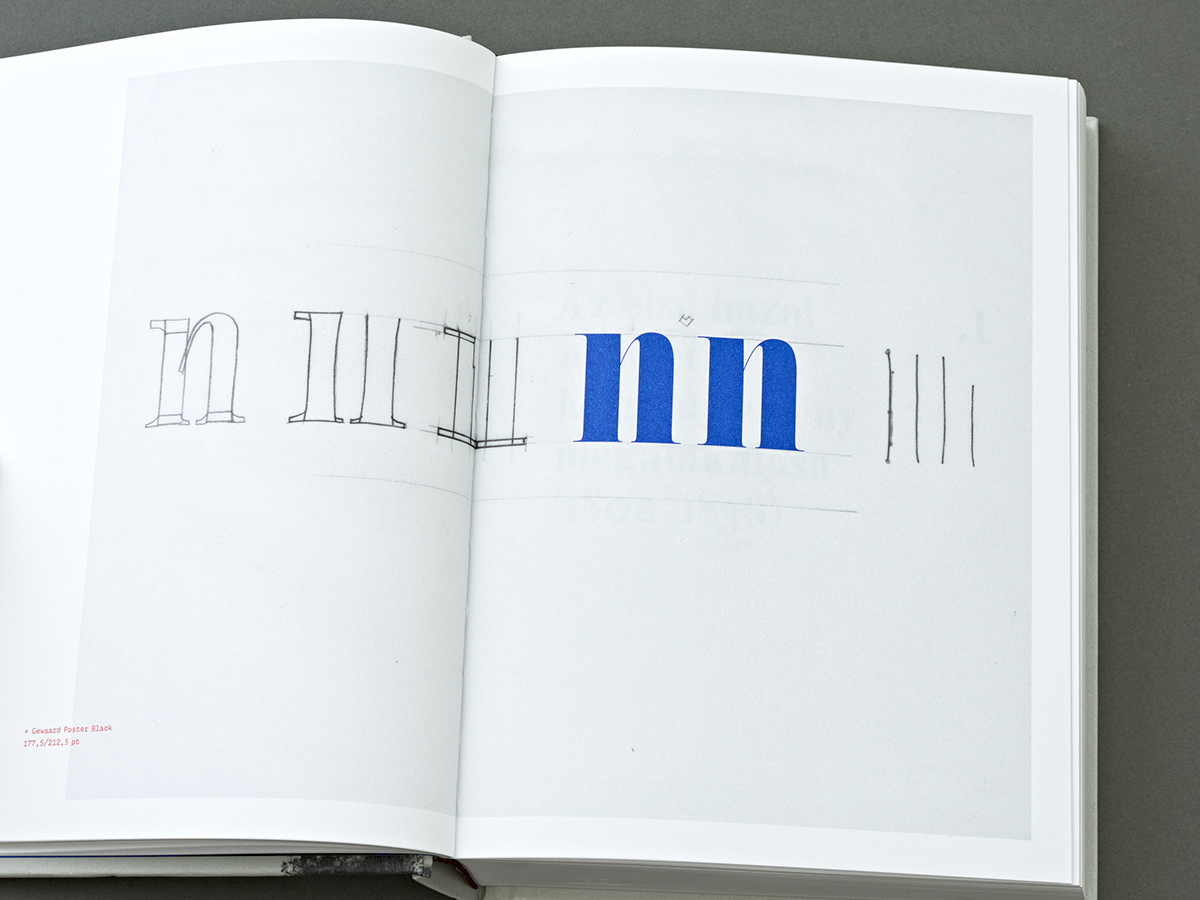

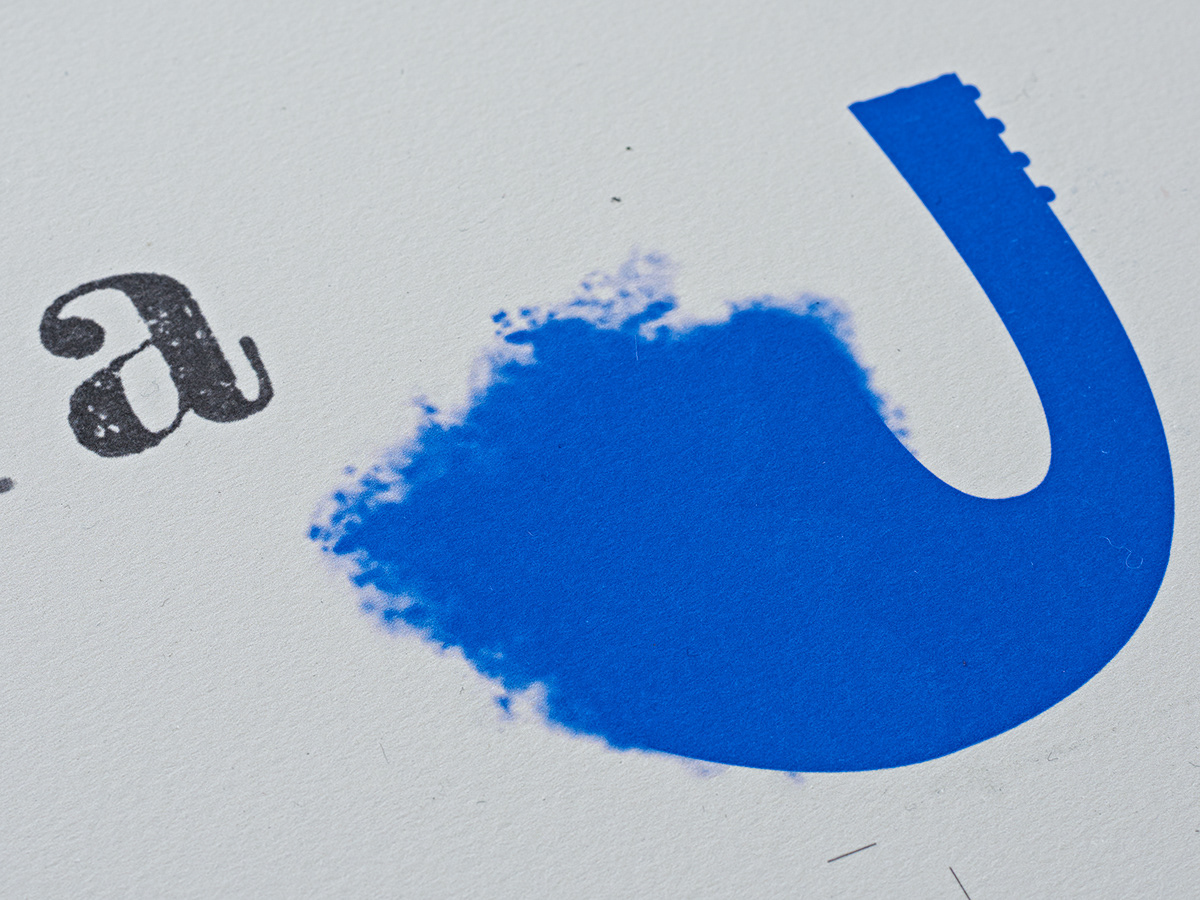
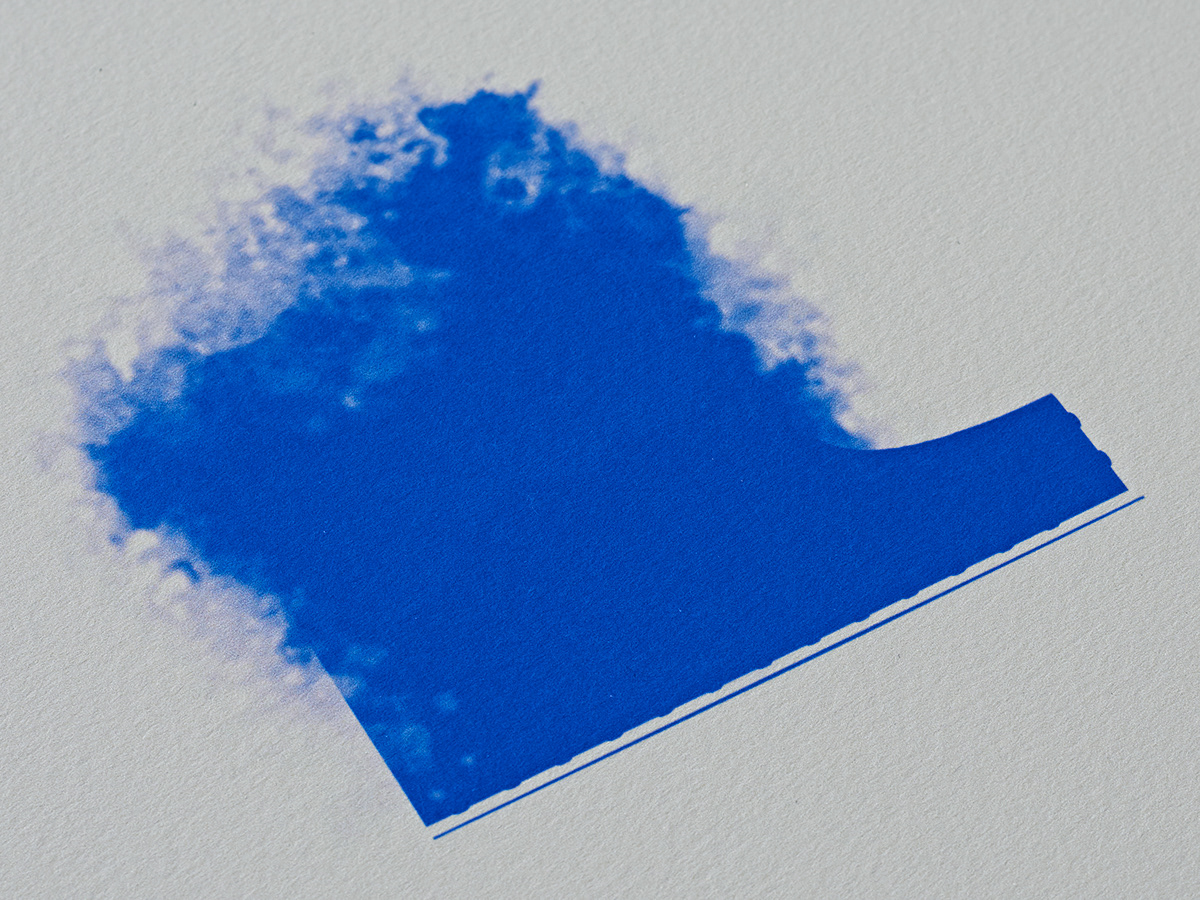
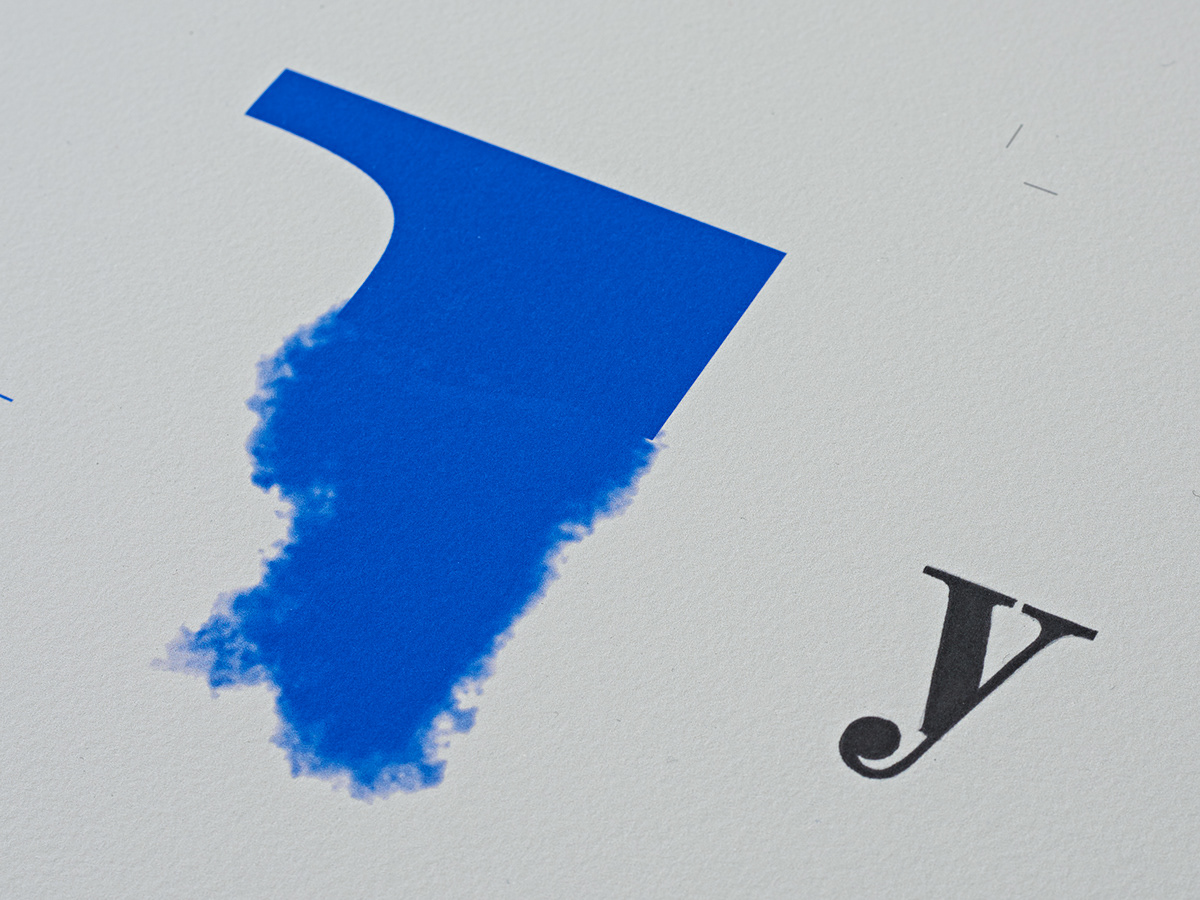
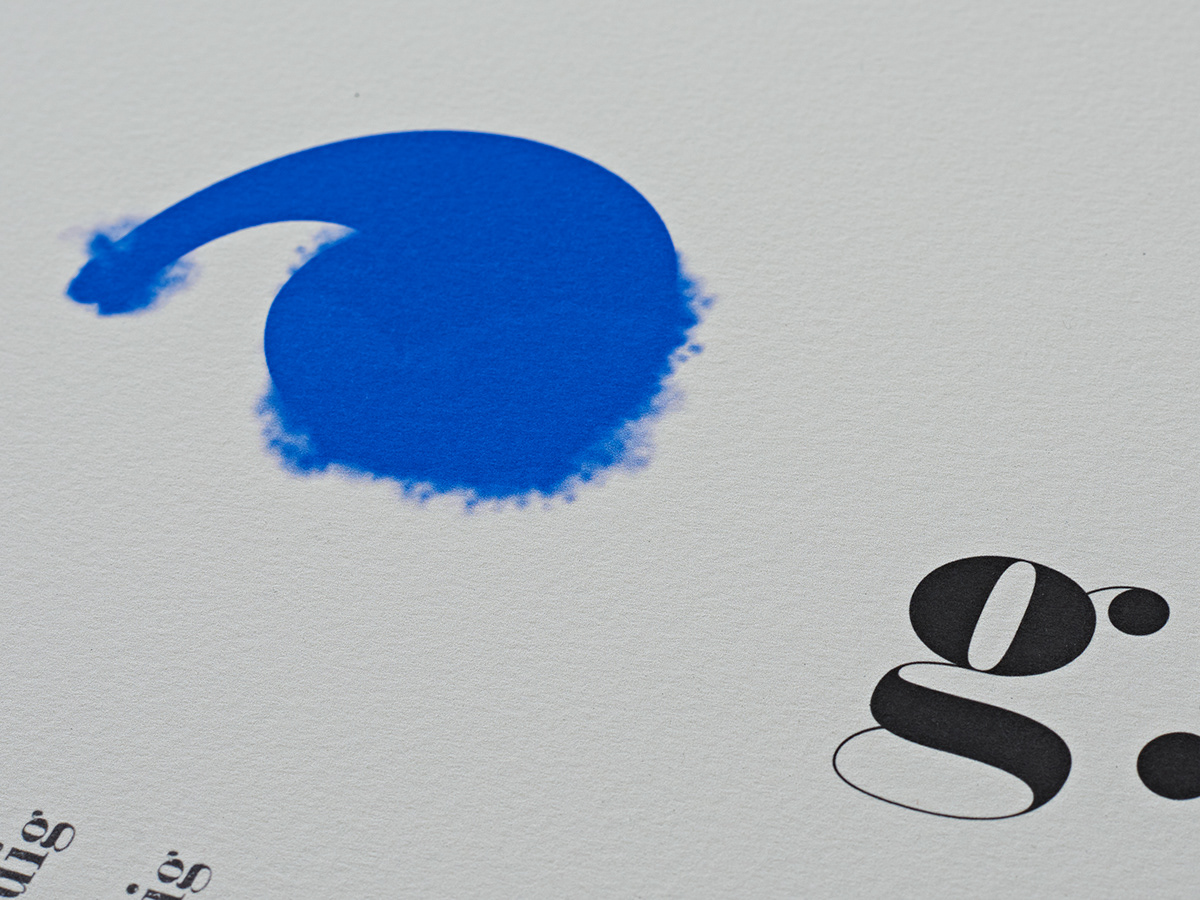
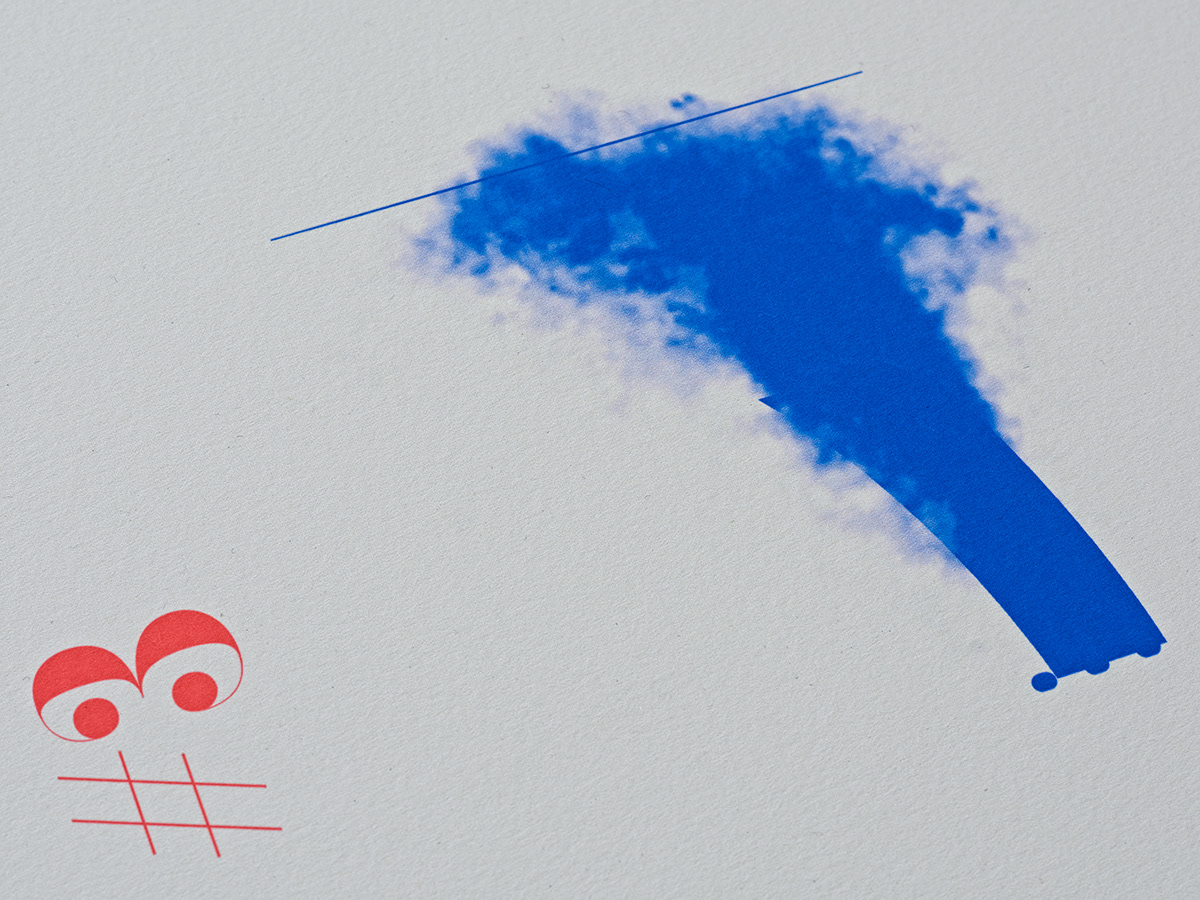
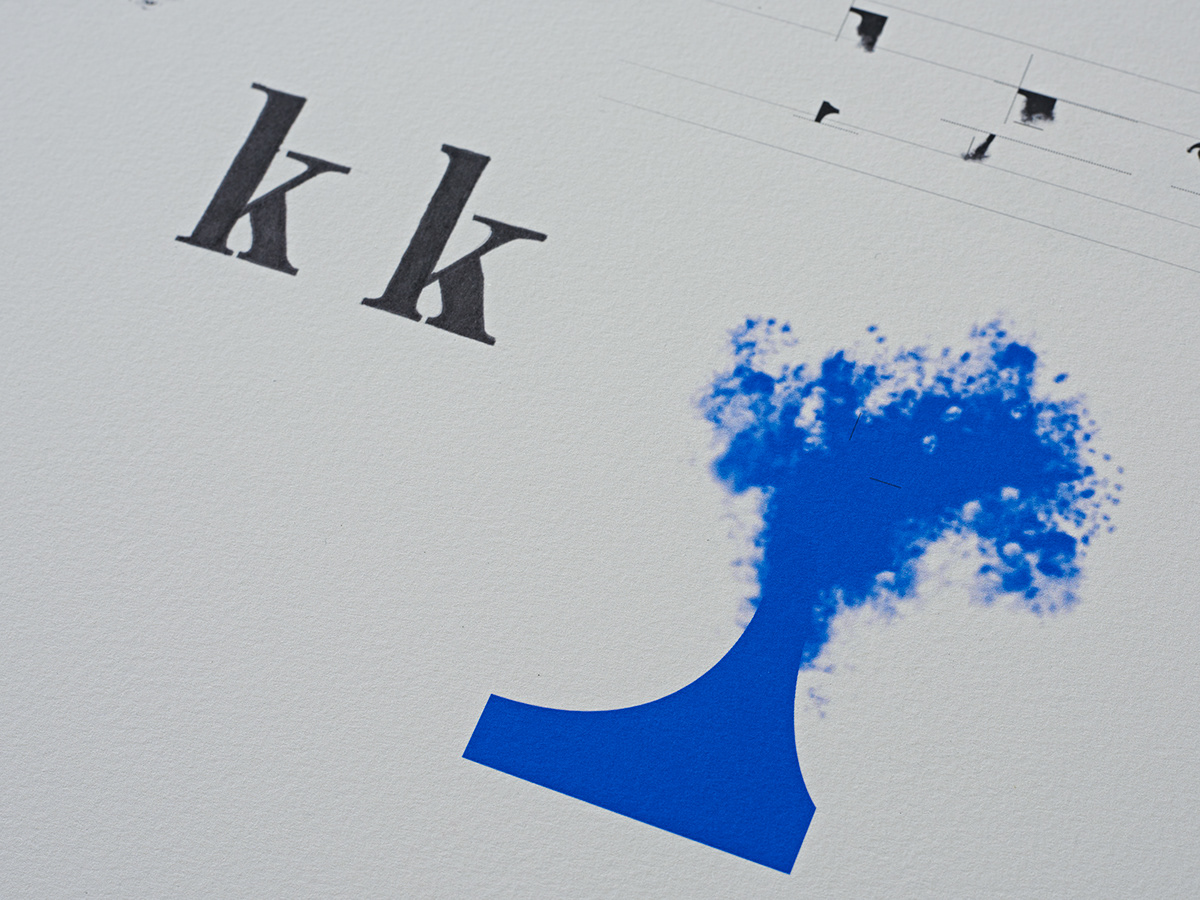
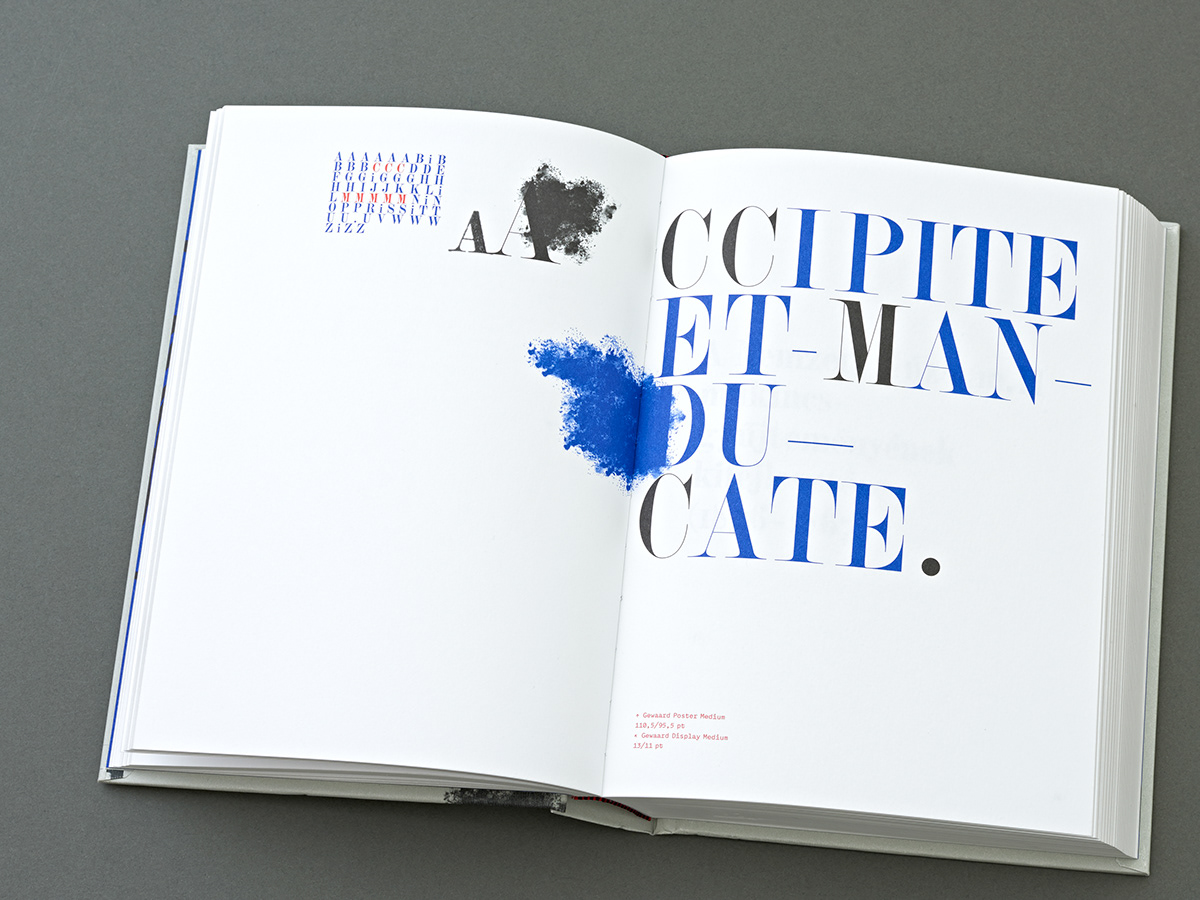

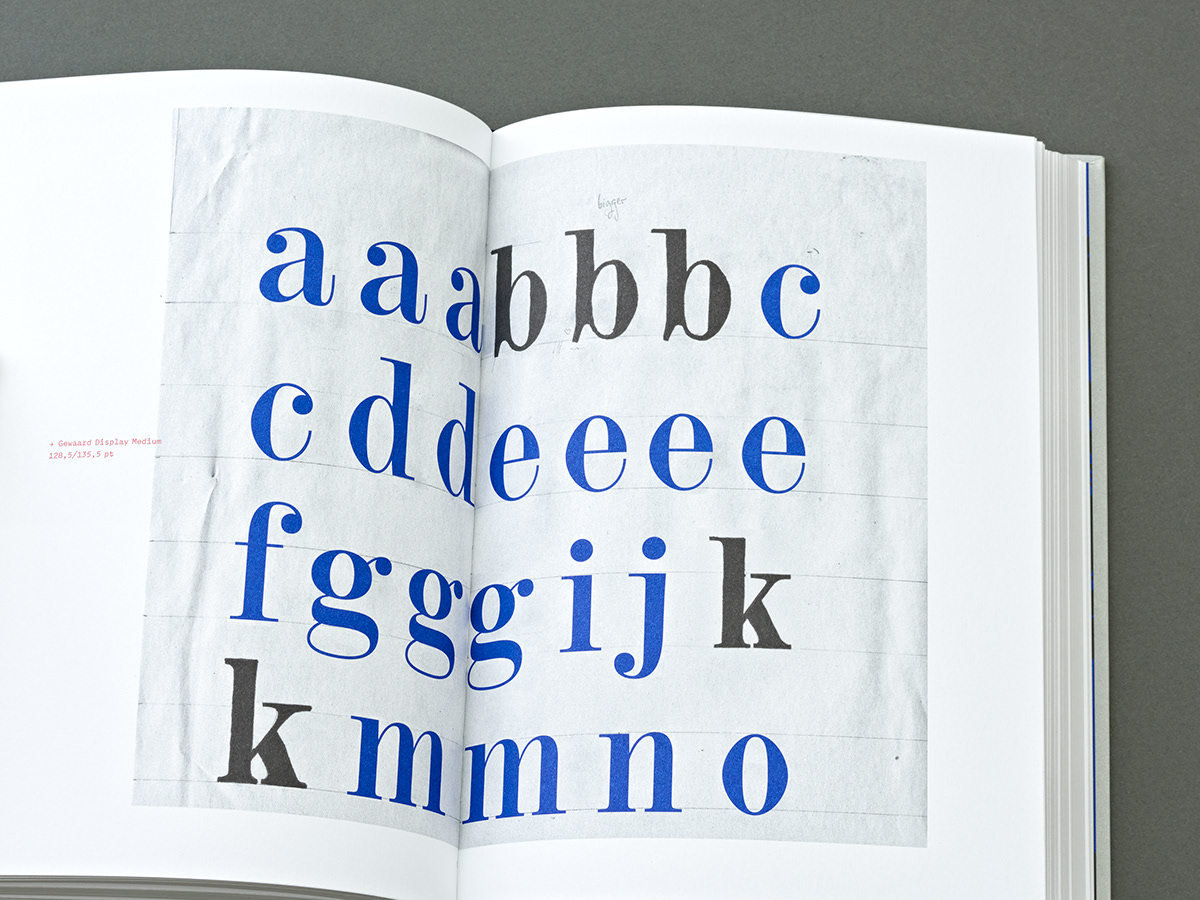
About the design of the book
The volume Art – Treasure – Collection: Public Collections of Art in Hungary, 1802-1906 is published with three different but connected covers, together constituting a poster, which belongs to the graphic design of the book. Due to the designers’ thorough technical expertise, using a standard printer’s sheet obtained from the James Cropper company in the UK, they created a 70x10 cm poster representing the book, from which they produced the individual covers by cutting out three different sections – monotone mounting paper representing powerful typographical signs and providing tactile experience bind the copies.
The black and ink blue “powder” appearing on the poster and in the book represents the everyday antecedents that came to the book designers’ mind when they first talked to the author – the first element of a list of concepts written on a scrap of paper, the image of a dusty loft in a museum waiting to be discovered and the vision of a multitude of objects.
The archive photographs on the poster are parts taken from the book: the first known representation of the Hungarian National Museum from 1845, its symbol; sketches for the sculpture series Dancing Peasant by Miklós Izsó, from the early 1870s, a symbol of objects and fragments held in museums; Károly Pulszky viewing paintings photographed by Antal Weinwurm c. 1888, representing the museum specialist and art historian developing the collection. Thus the graphic design work fuses the layers of the museum as a subject and typography.
The designer’s experiment examines the interaction between the part and the whole. The universal institutional system of Hungarian museums is the mass of the whole, while the poster demonstrates the invisible connection and interdependence of the currently physically separate collections. The poster and the three different yet coherent book covers, whose design is defined by the typographical history explored during a school assignment and then gained publicity and by the typographer’s sketches and fragments of letters with the former’s digital adaptation are associated with museum pillars and ruins and stones on display in the lapidarium of the Hungarian National Museum. Thus the graphic design on the book covers constitutes three sections cut out from the poster precisely at the places where print masters position the design on the complete printing sheet when printing the cover paper. So the designers considered the printing waste by which they created a new quality, an artistic product which accompanies the book, reflects on the contents in the language of graphic design, raises its prestige and promotes the project.
The book design considers the page pair as a whole, the bipolar design being warranted by the author’s request for references to the text and photographs illustrating the text to appear on the same surface as the text. The designers were seriously restricted by the 505 footnotes and 118 archive photographs, while they insisted on creating a Prussian-like typographical order that has always characterised their designs. Thus they used the page pair as a tool – they arranged the written text on the left and appointed the page on the right to contain the elements belonging to the text.
Connecting museum history and the history of typography based on the art historian’s and typographer’s research, which took place in parallel at the same time but in different spaces, represents the designers’ specific, contemplating and philosophical thinking about book illustration.
The designers express their gratitude to the author of the book for accepting their idea and allowing artistic freedom for the operations with the Gewaard typeface and its details on the cover and inside pages of an academic professional book.
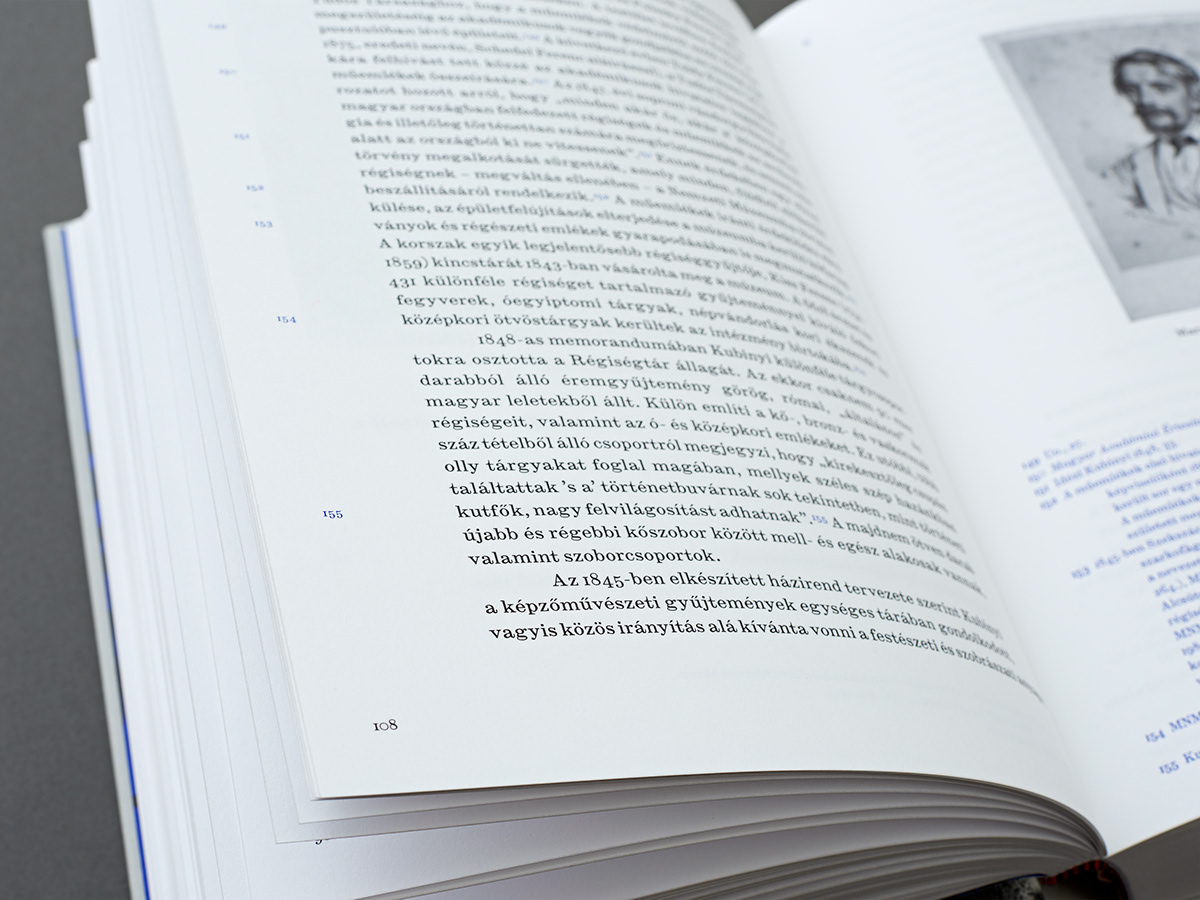
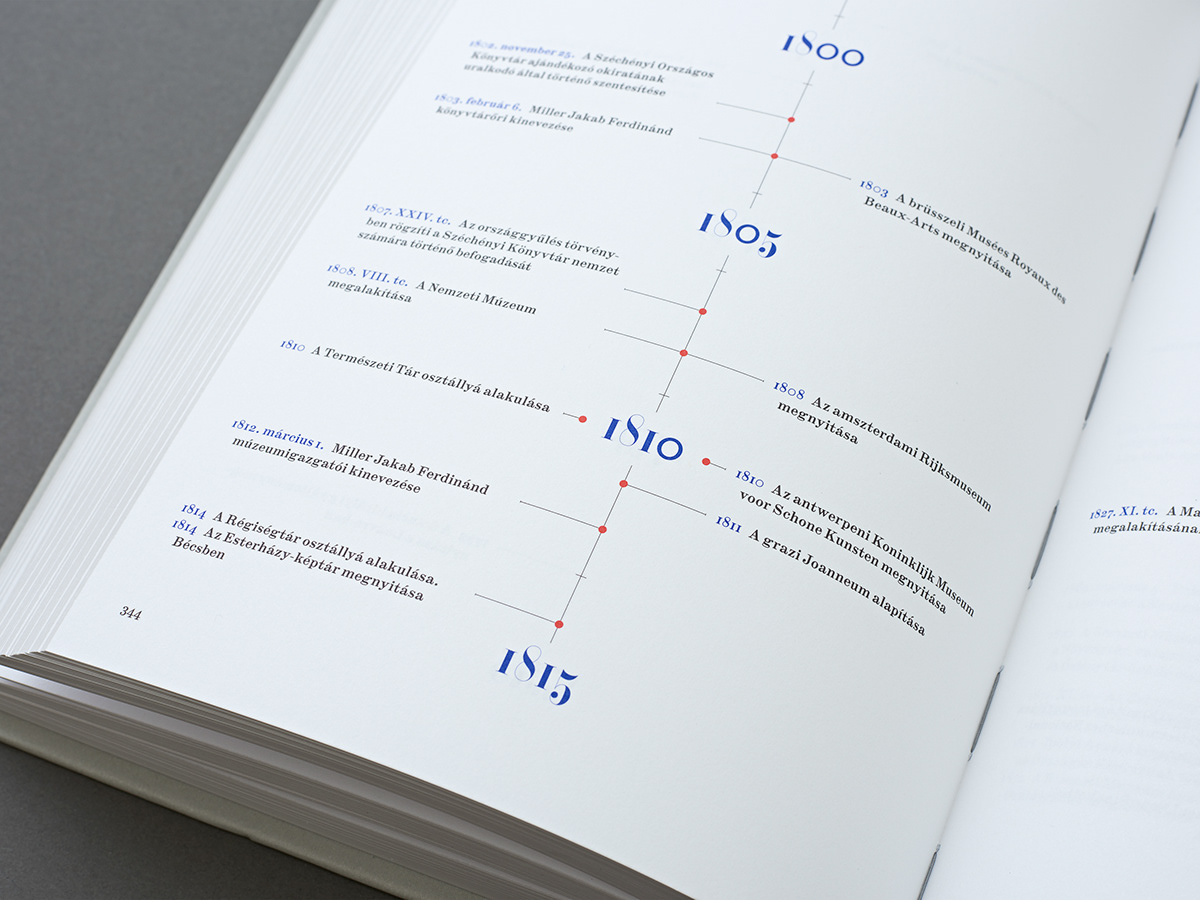
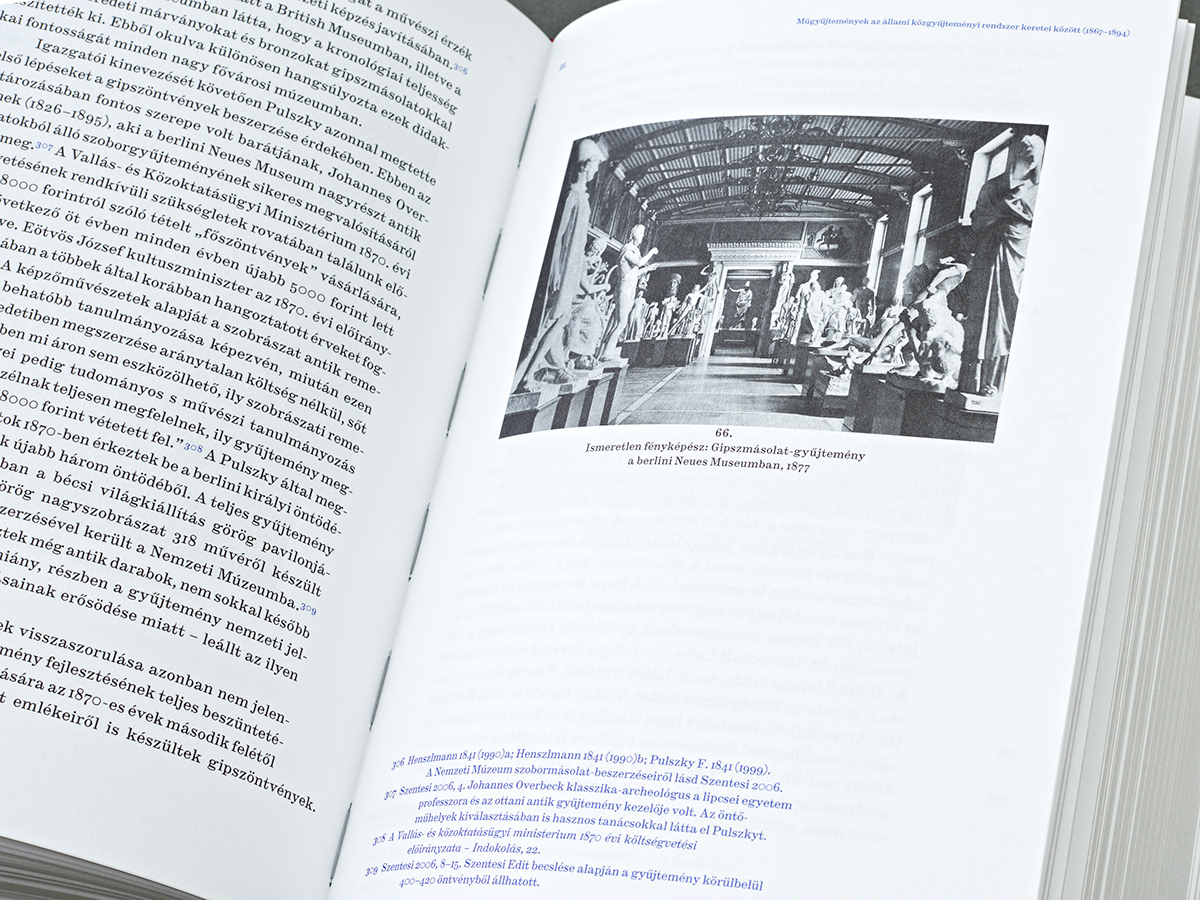
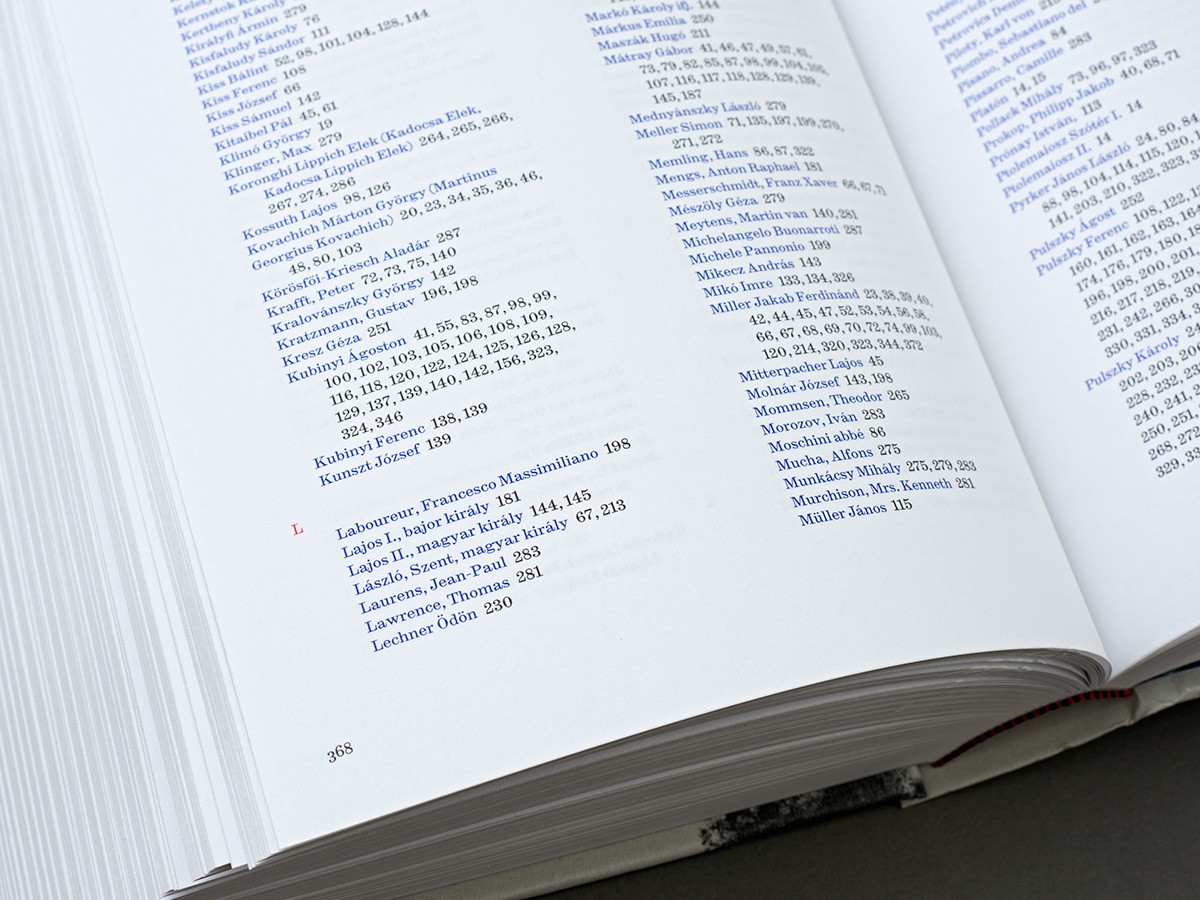
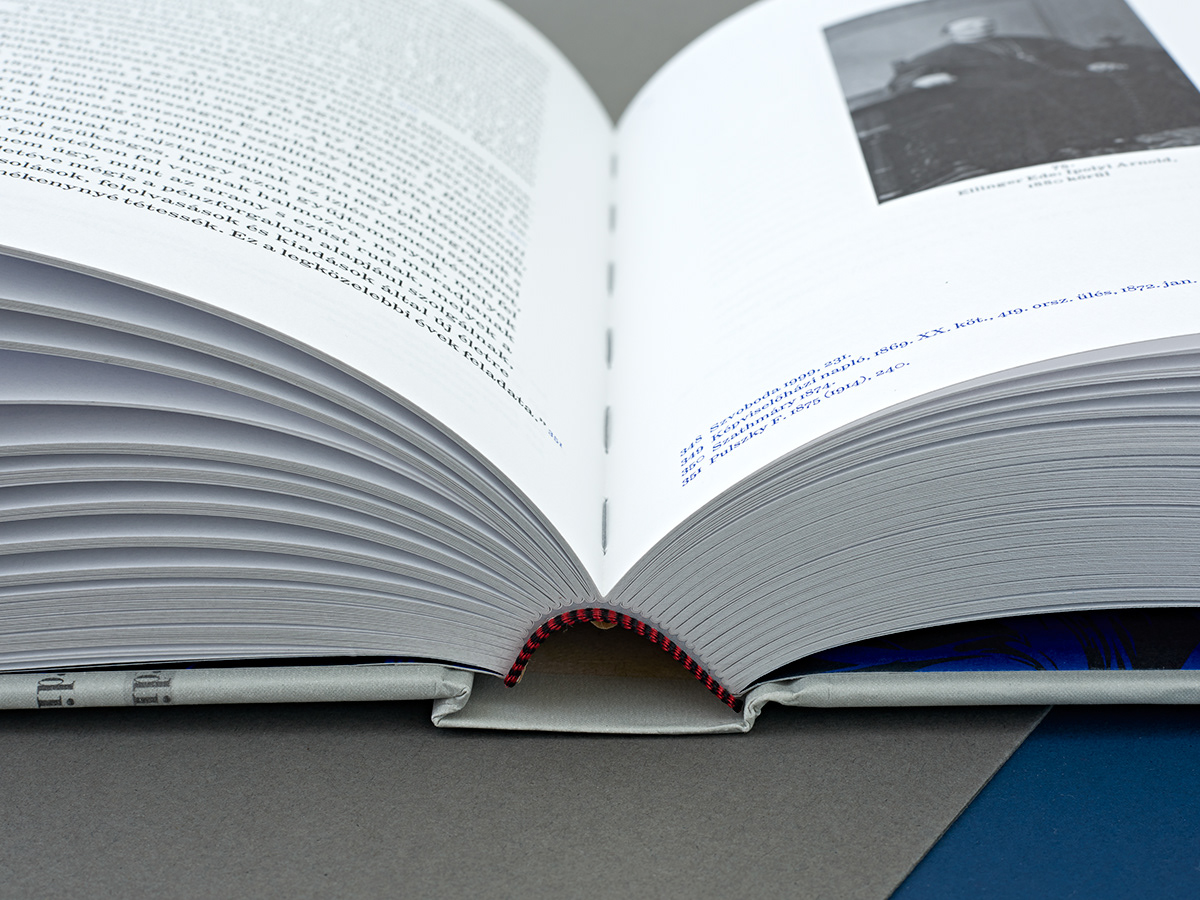
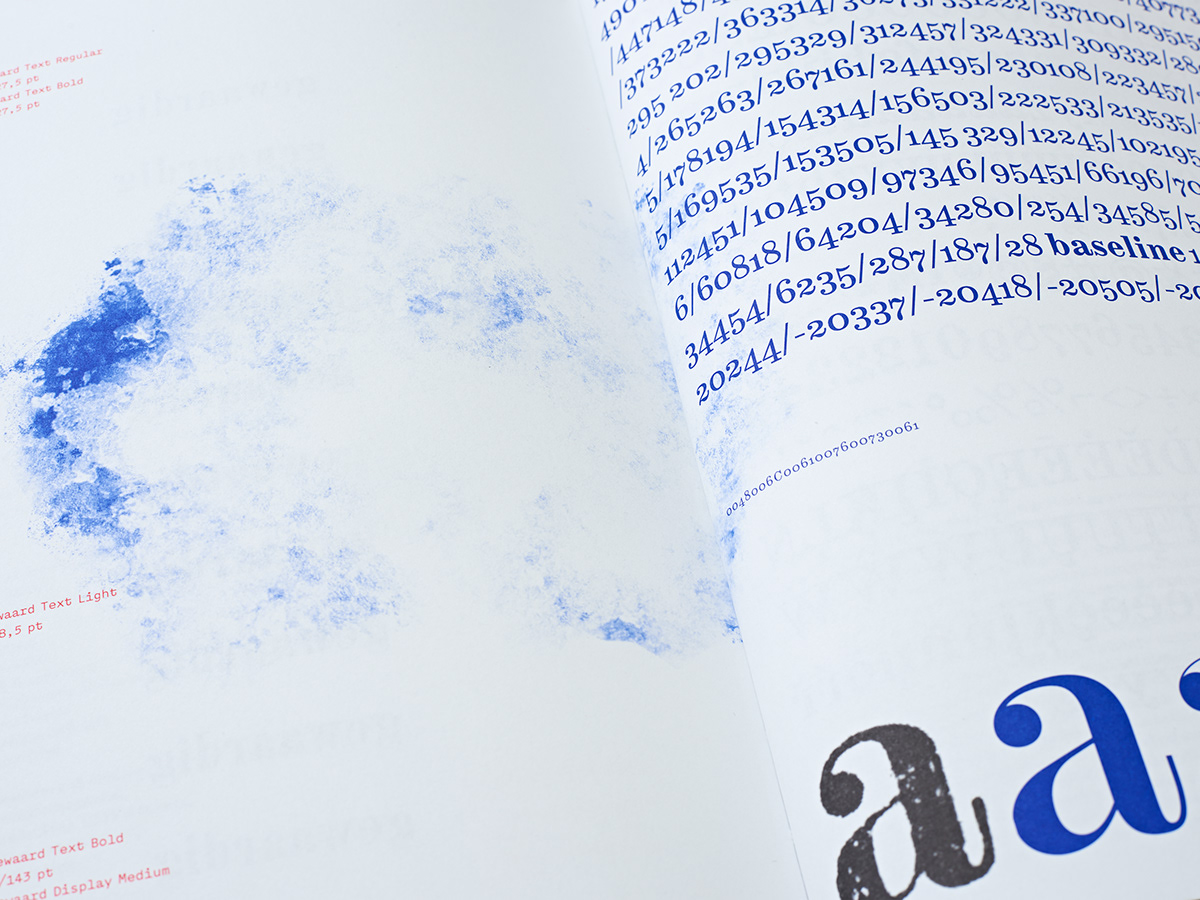
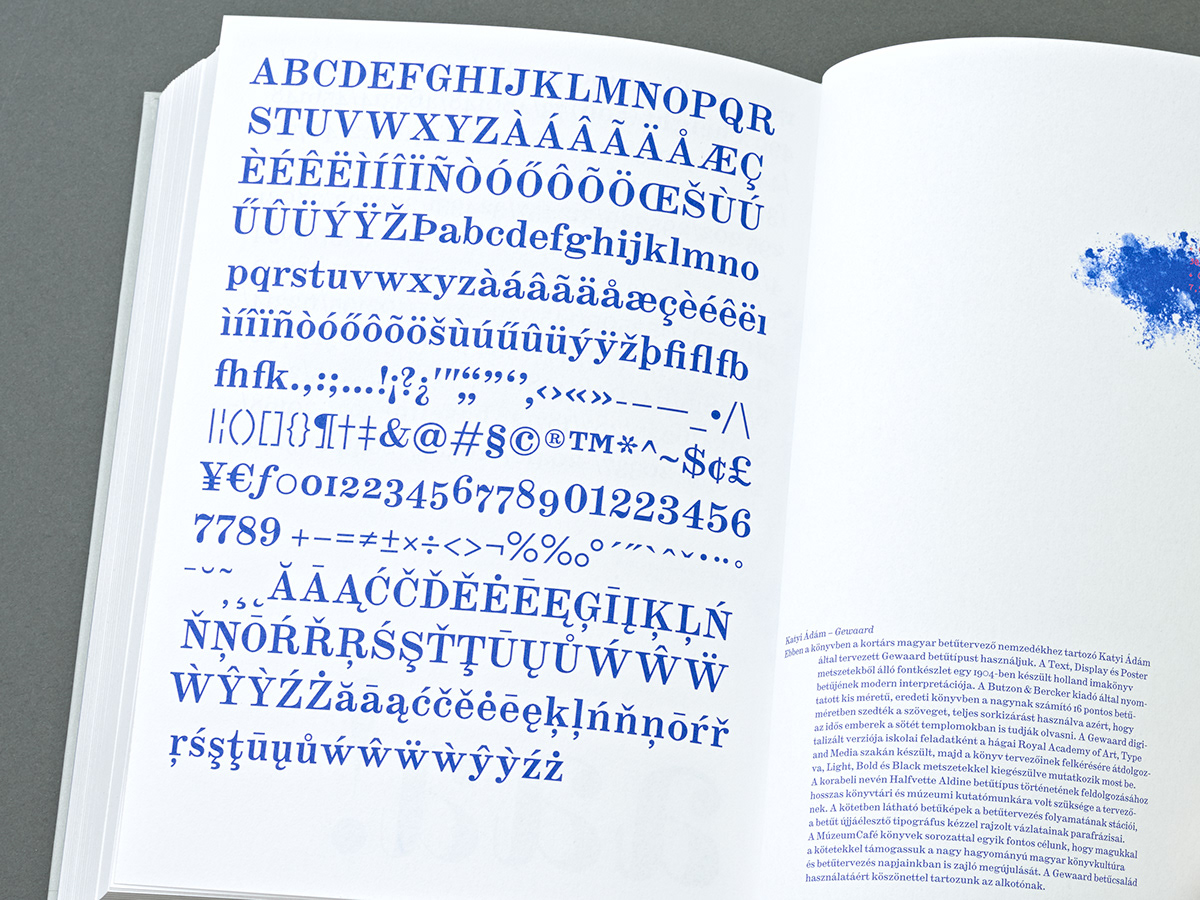
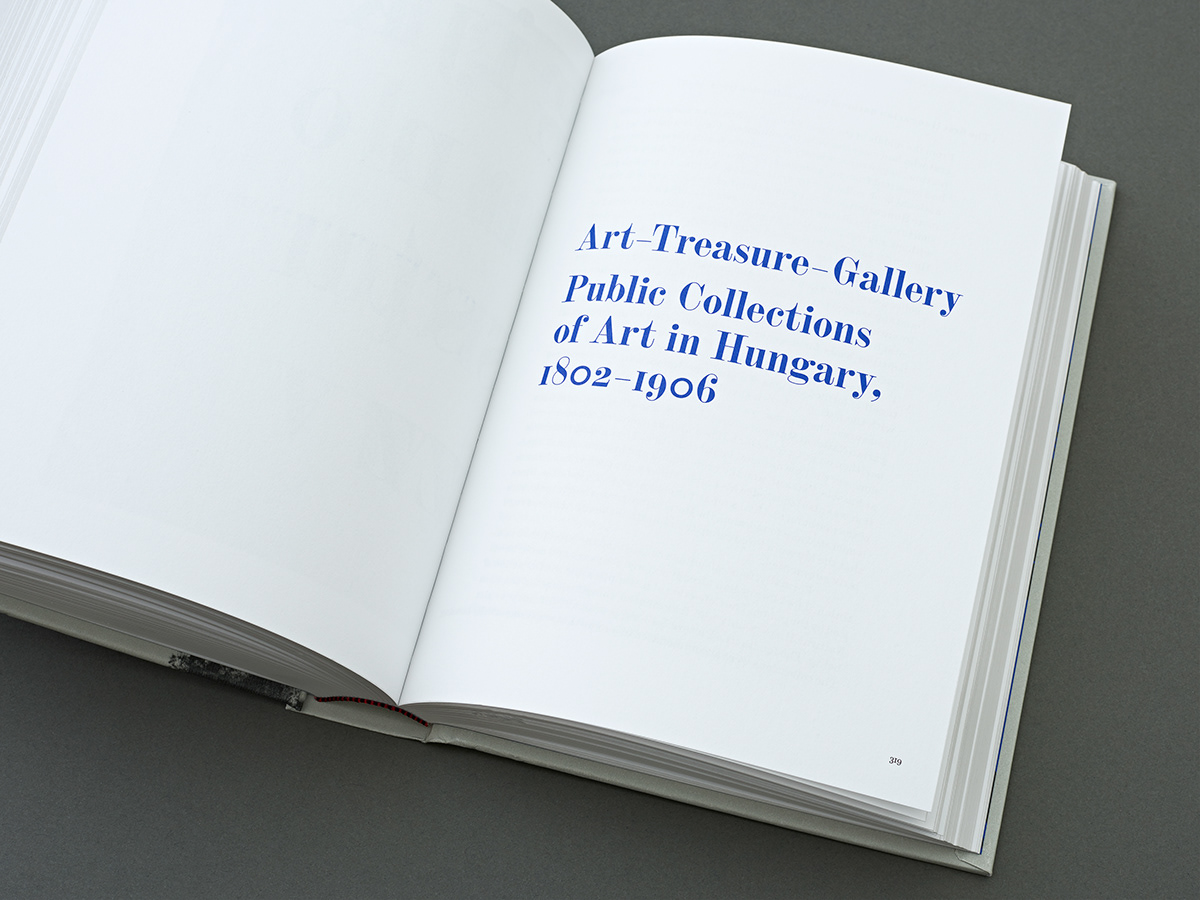
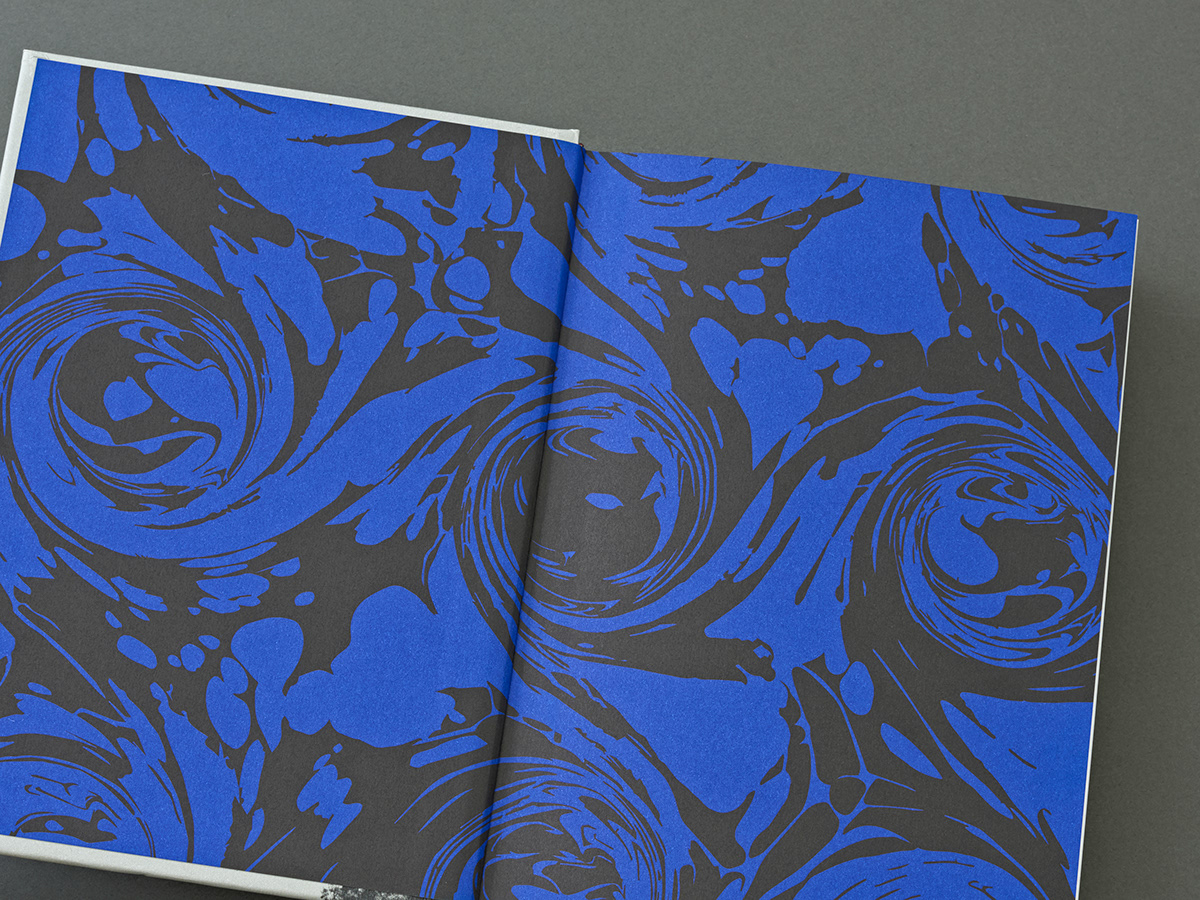
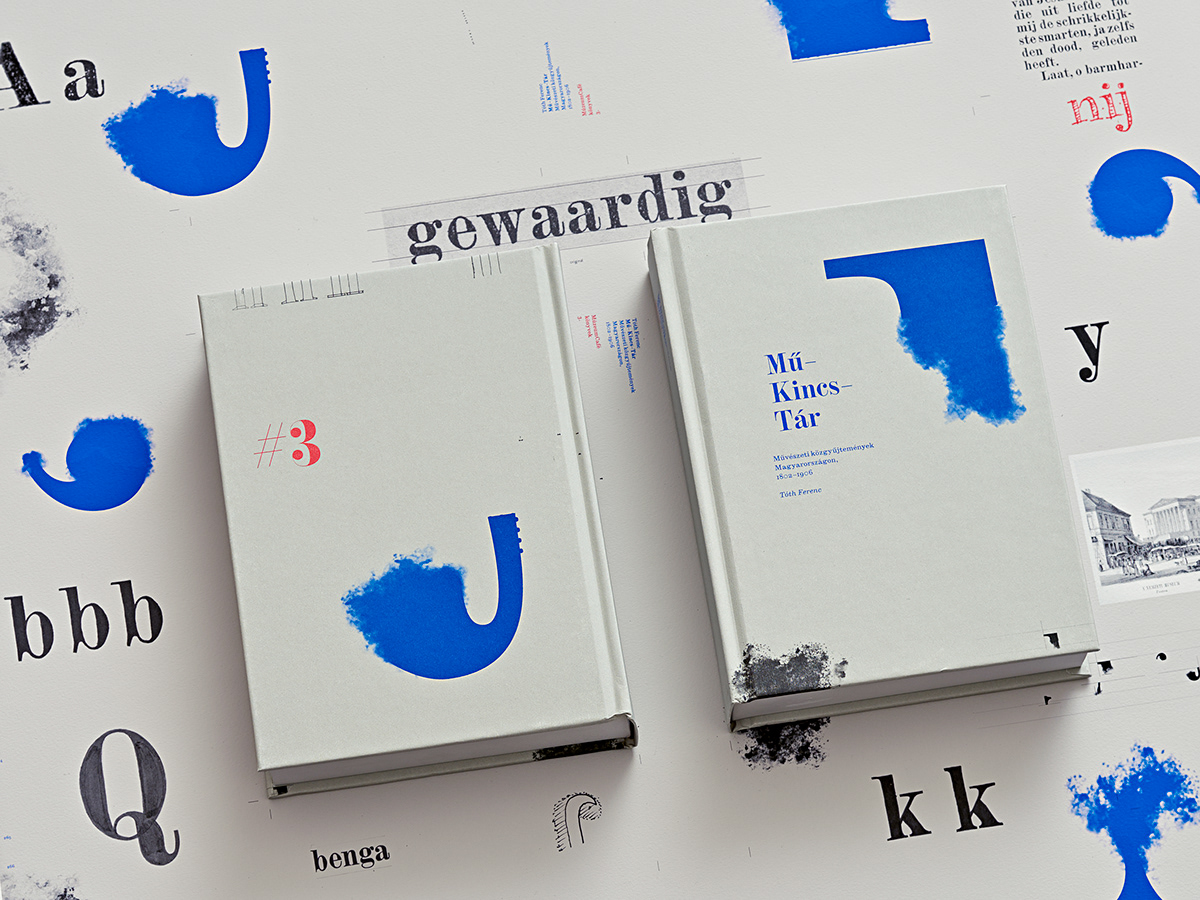
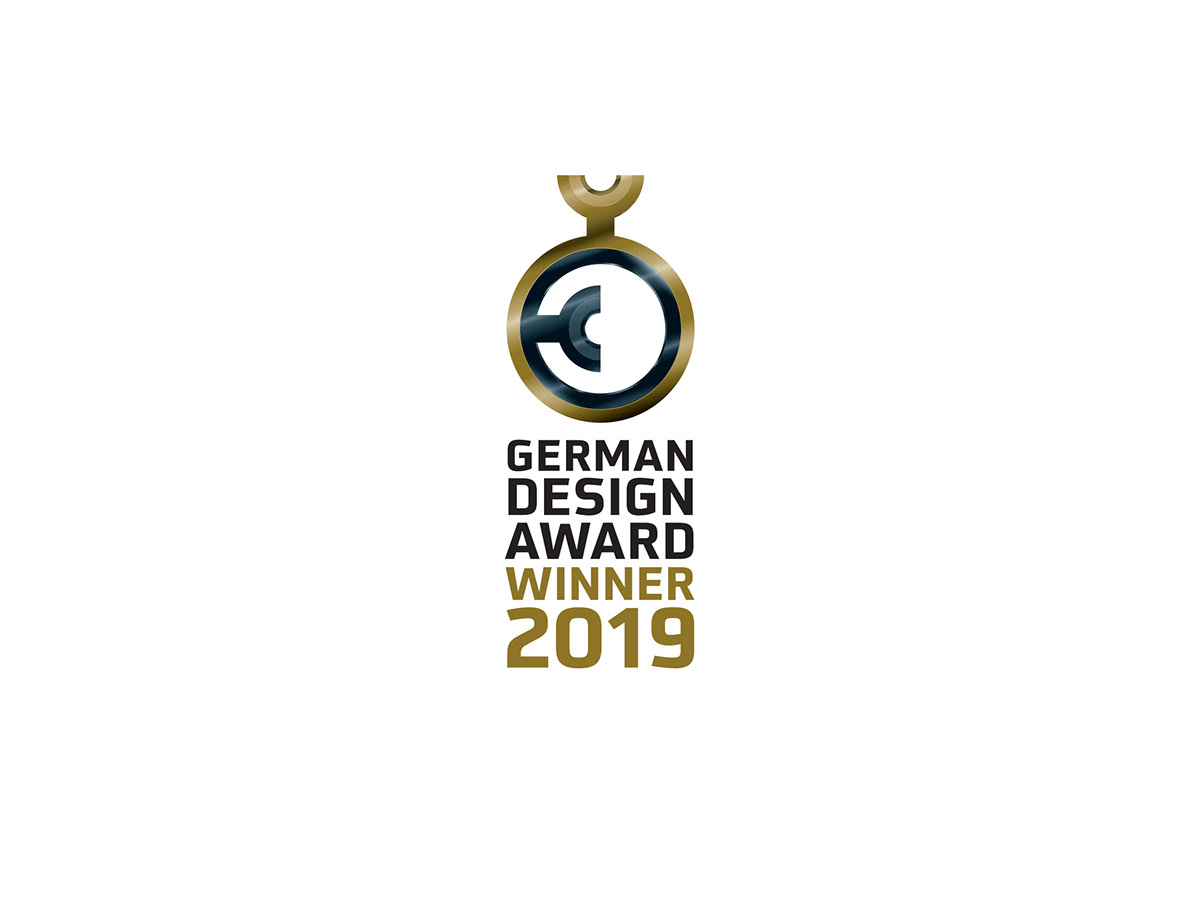
Imprint
Author – Ferenc Tóth
Editor – Orsolya Radványi
Artistic Director – Zalán Péter Salát
Book design – Zalán Péter Salát, Viktor Suszter, Dániel L. Németh
Typeface – Gewaard by Ádám Katyi
Picture Editors – Zalán Péter Salát
Assistant – Agnes Brunner
Copy editor – Árpád Szendrői
Image processing – Sándor Rácz
Printed by – EPC Nyomda, Budaörs
Manager – László Mészáros
Publisher – Dr. Baán László, Director, Museum of Fine Arts, Budapest
October 2017
Technical Details
Published in a volume of 28 printer’s sheets, 448 pages,
500 copies, offset printing,
with the use of FM screening and CMYK black and Pantone 876 U, Pantone Red 032 U and Pantone Cool Gray 4U colour
Cover and Binding – The book block is stitched with thread and covered by a 3.5 mm Eska greyboard mounted on the James Cropper special, Carvetian Suede 135 gr mounting paper
Paper – Munken Kristall Rough 120 gramme by Arctic Paper
Trimmed Size – 175×242 mm
Language – Hungarian, with English summary
ISBN 978-963-89775-5-7
Edition 10/2017
Design photos by – Csaba Villányi & Zalán Péter Salát
Retouch – Sándor Rácz
Retouch – Sándor Rácz


